Our Blog - Lombardy 2025 - Verona, Italy Part 2, Italy
Sometimes, the way that cities handle ancient finds are quite interesting. When part of a Roman wall was found in Toulouse in the basement of a building that was being renovated to be a Uniqlo store, they decided to put it behind glass and allow people to view the wall from inside the store. Others have left the ruins visible in a section of a parking garage. Here, they decided to dismantle it and rebuild some of it at ground level. These are remains of a structure dating to the end of the 1st century AD. When the city was digging the underground parking garage at the site of the former Arsenal, they found these Roman ruins.
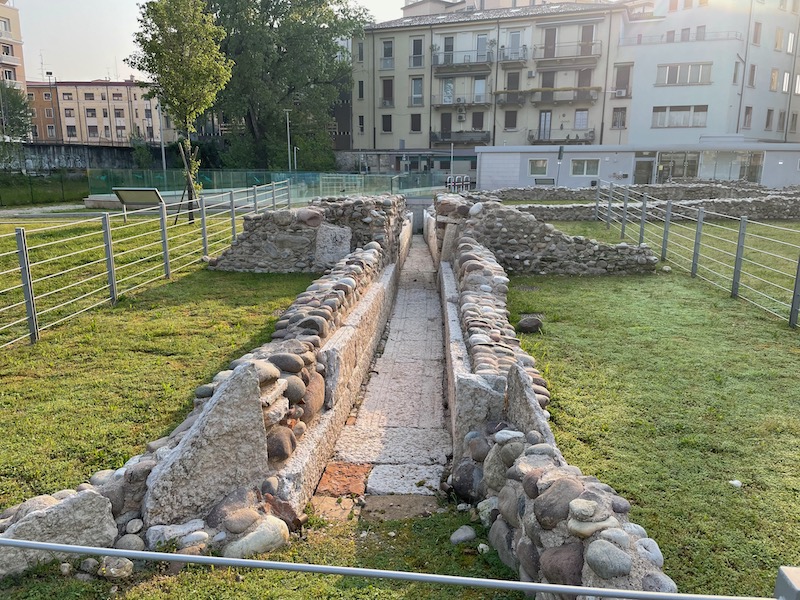
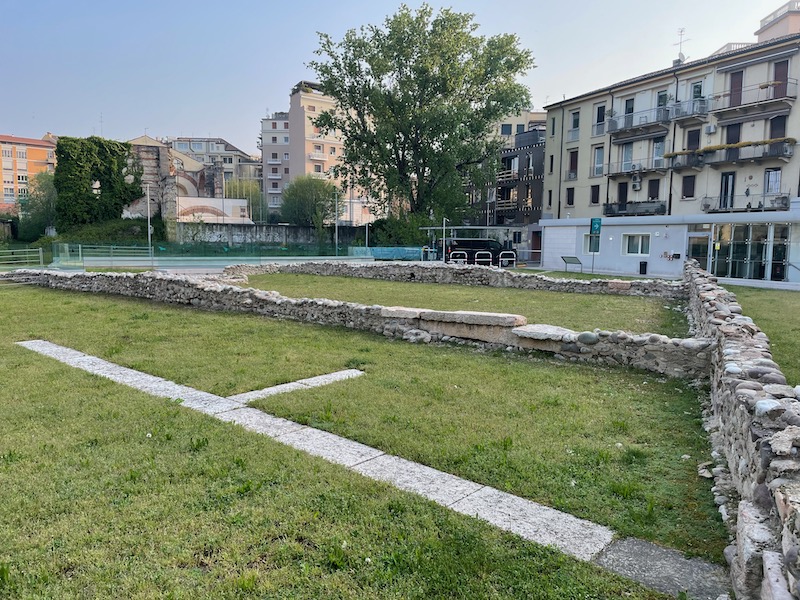
The other part was left in the parking garage.
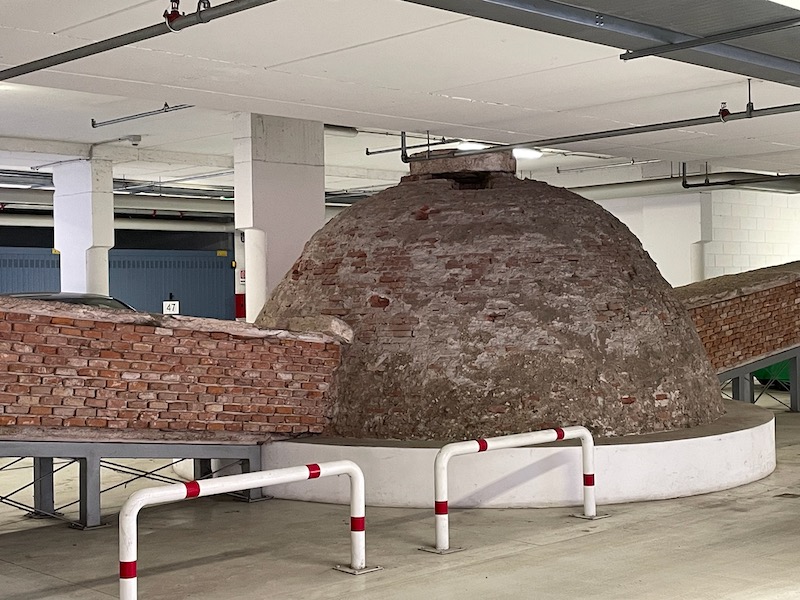
Porta Palio is one of the "newer" gates into the city, built from 1550–1561. This side is fairly bland, with only nice decorations on the frieze. But the side that faces out, so the side people arriving to the city would see, is much nicer. There are several coats of arms and busts. One interesting one was that above the statue in the last picture is what looks like a cow.
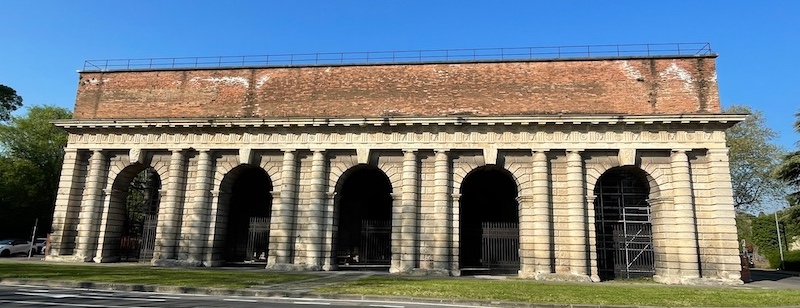
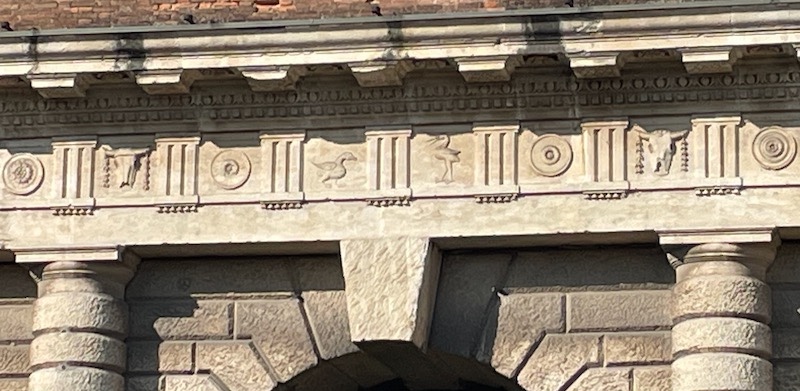
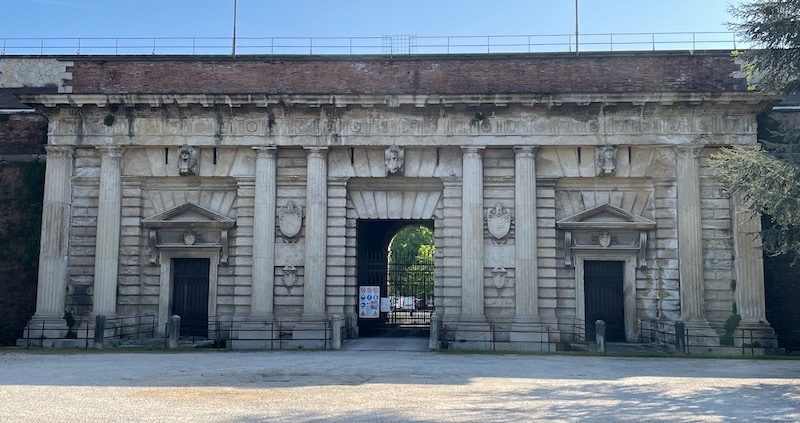
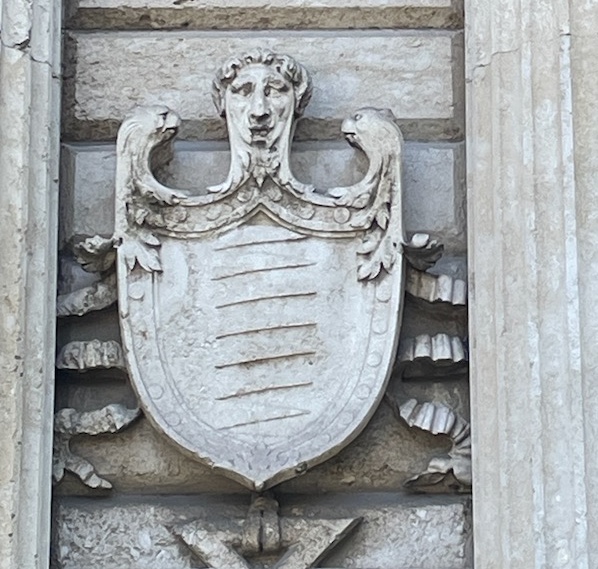
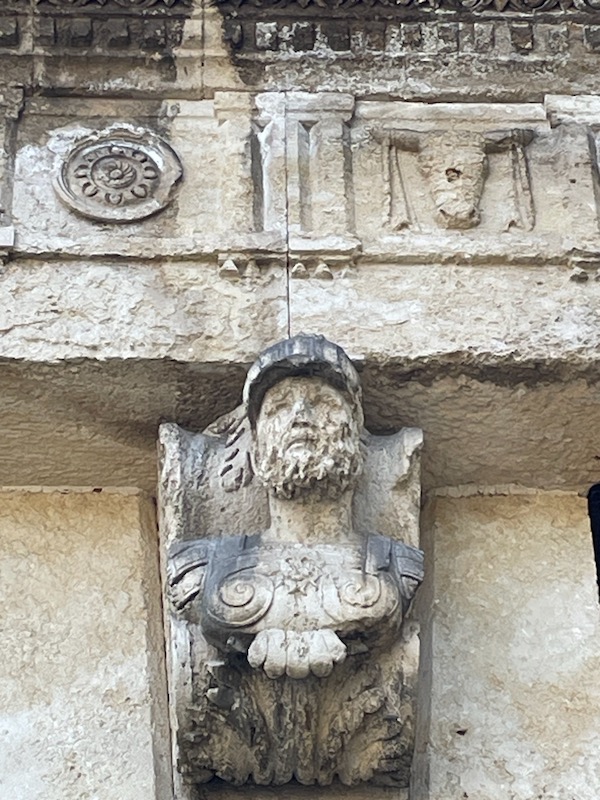
Down the road is the Porta Nuova, built by the same architect as the Porta Palio but a bit earlier (1532 to 1540). It has been changed several times, including a lion of St. Mark being destroyed by the Jacobins in 1801 and replaced by a coat of arms in 1854. More cow decorations on the frieze here as well.
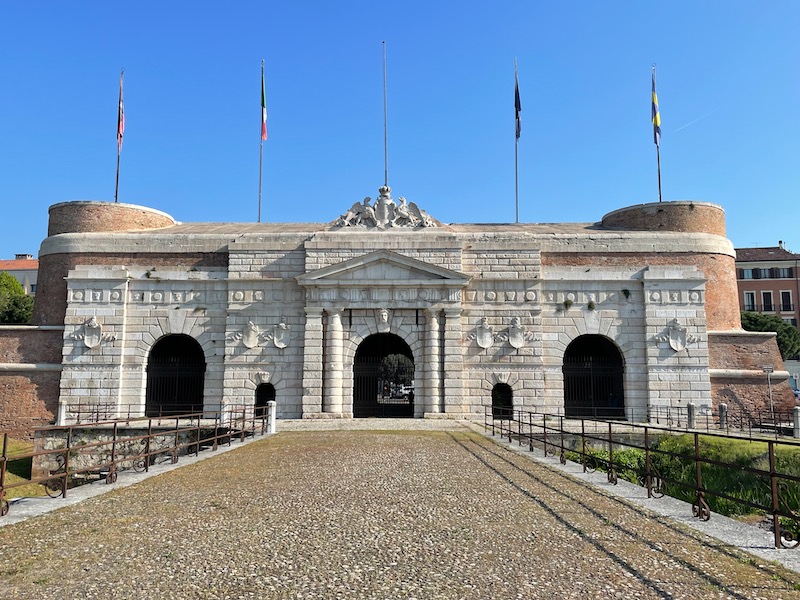
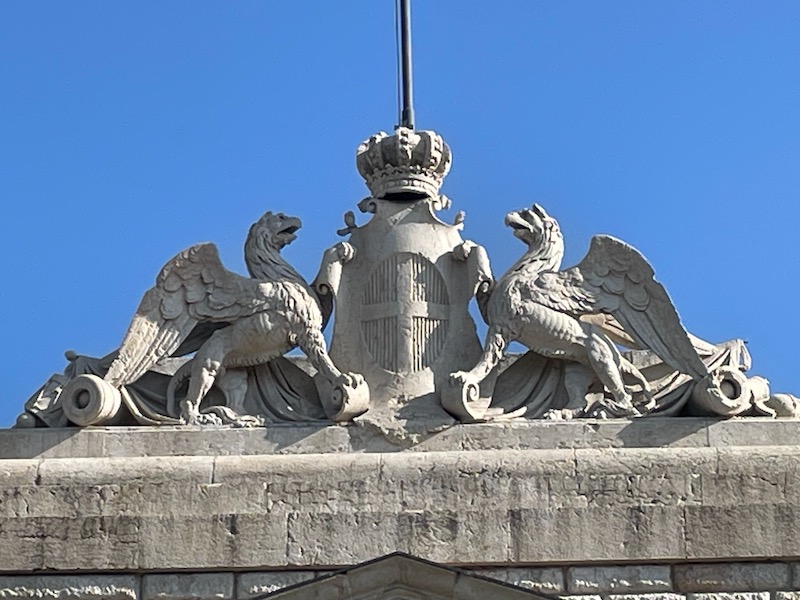
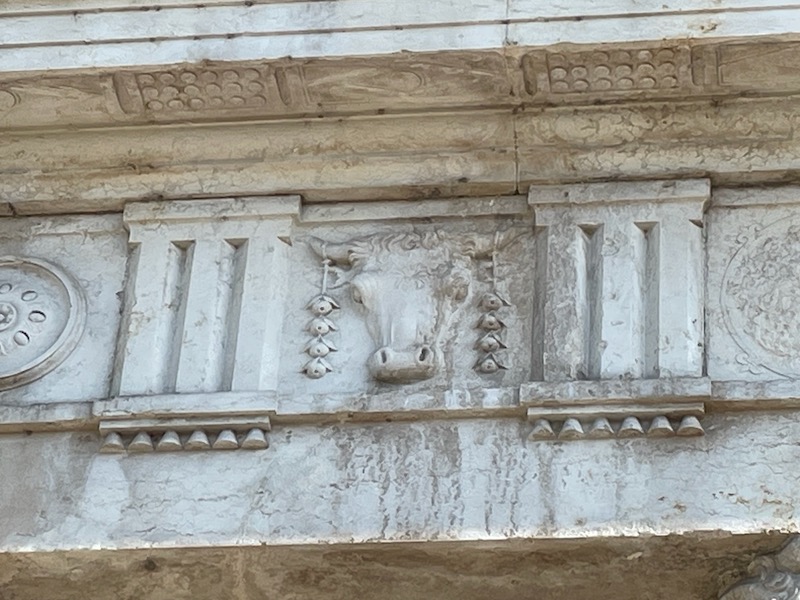
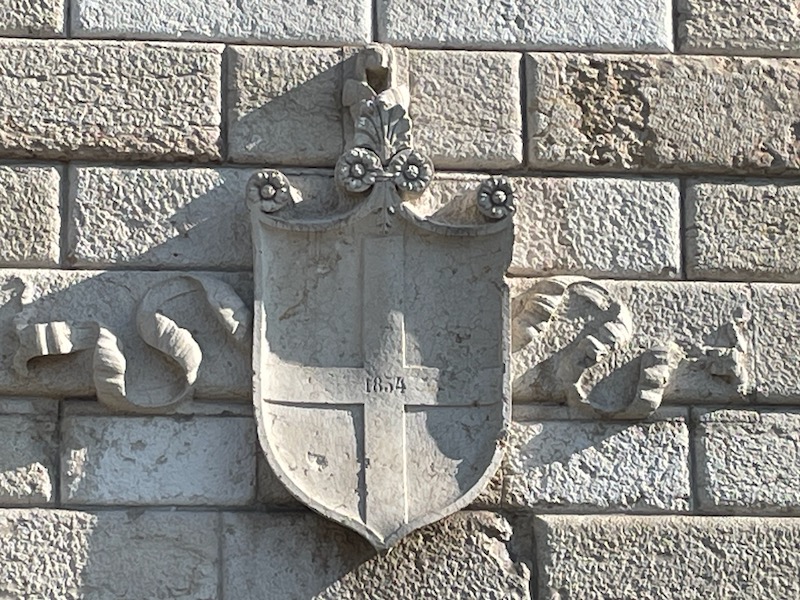
As we walked towards the center of the town, to the next gate, we got a glimpse of the snow-capped mountains. Which mountains? Since we were looking North, I assume somewhere in the Alps.
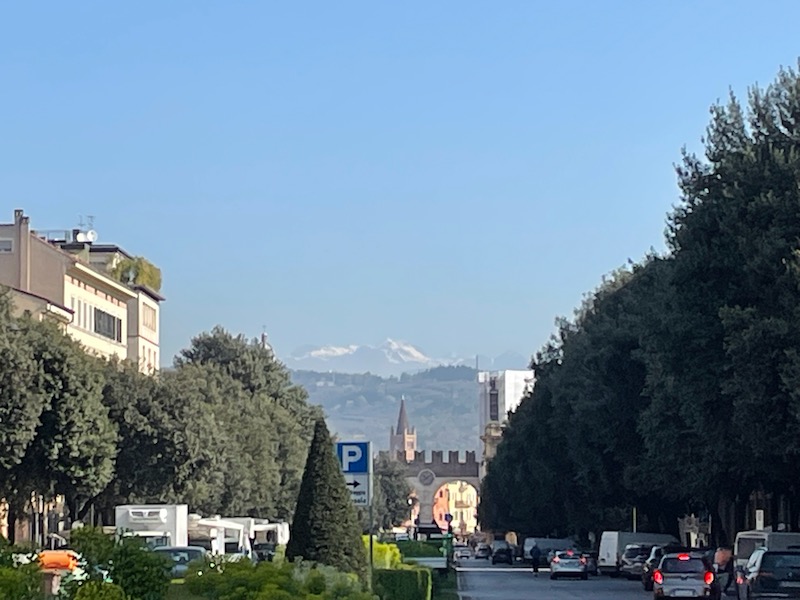
The Portoni della Bra is the access point into the ancient city with 2 round marble arches and the same kind of crenelations at the top as other buildings that we had seen. The clock was added in 1871.
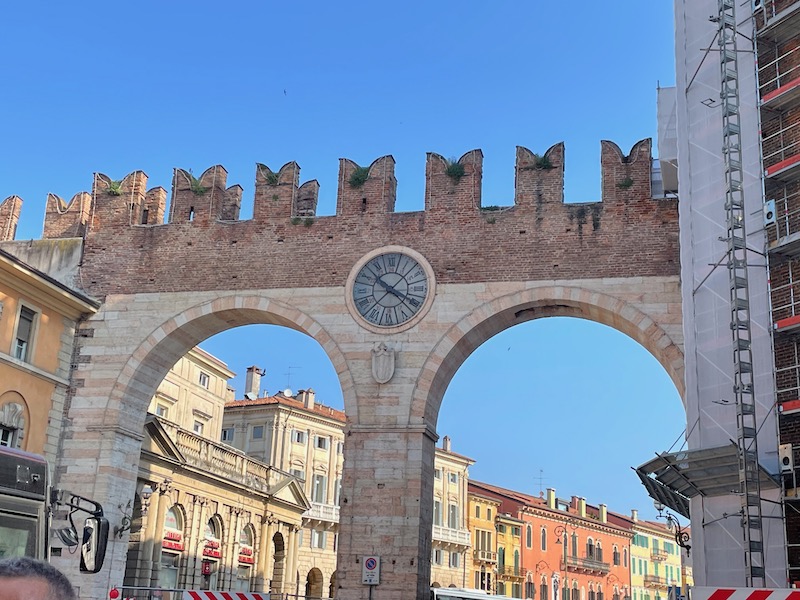
Porta Leoni was the gate that gave access to the cardo maximus, one of the two main roads of Roman Verona. Originally, around 50/40 BC, it was all made of brick and the white stone was added around 50-70 AD. The name comes from a sarcophagus that was found nearby that had 2 lions carved on the lid. Only 1/2 of the gate exists and it is odd because it basically is up against another building (so no longer an actual gate). There used to be 2 large towers as well, which are in the process of being excavated (we saw some workers down in the work zone). You can clearly make out the round tower base.
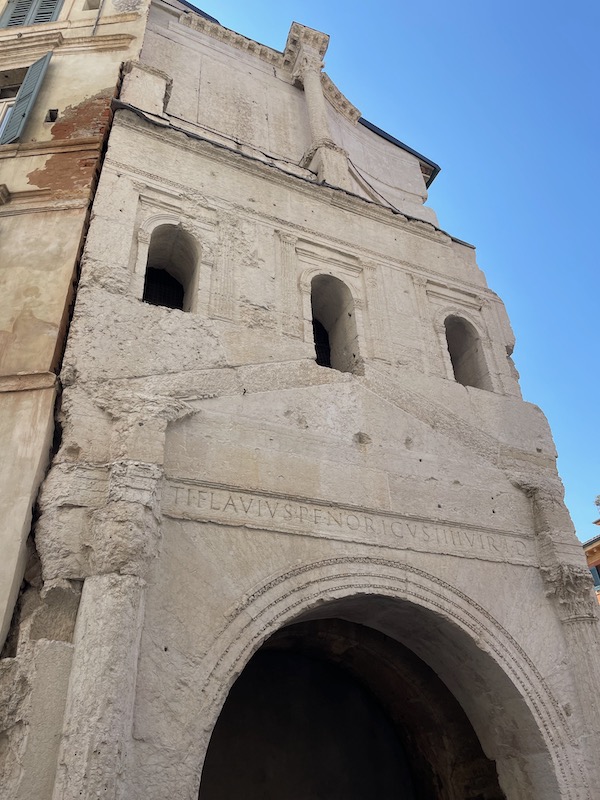
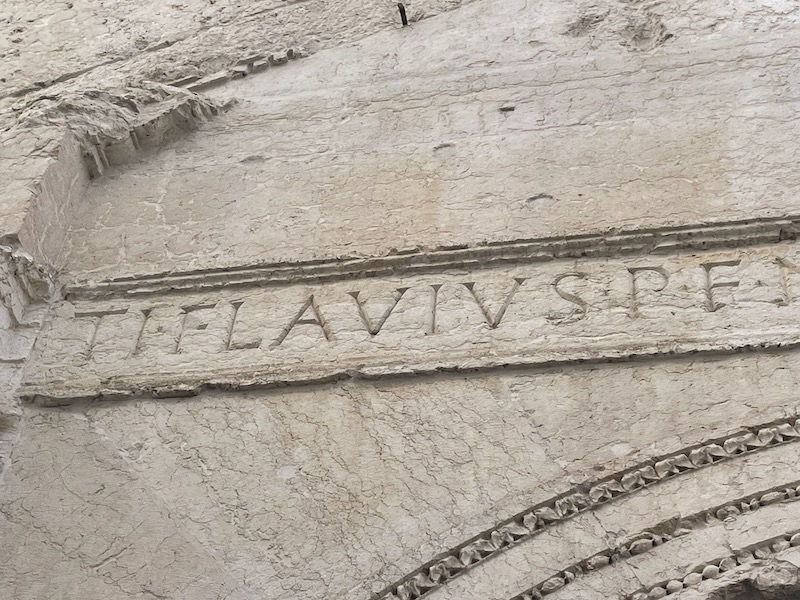
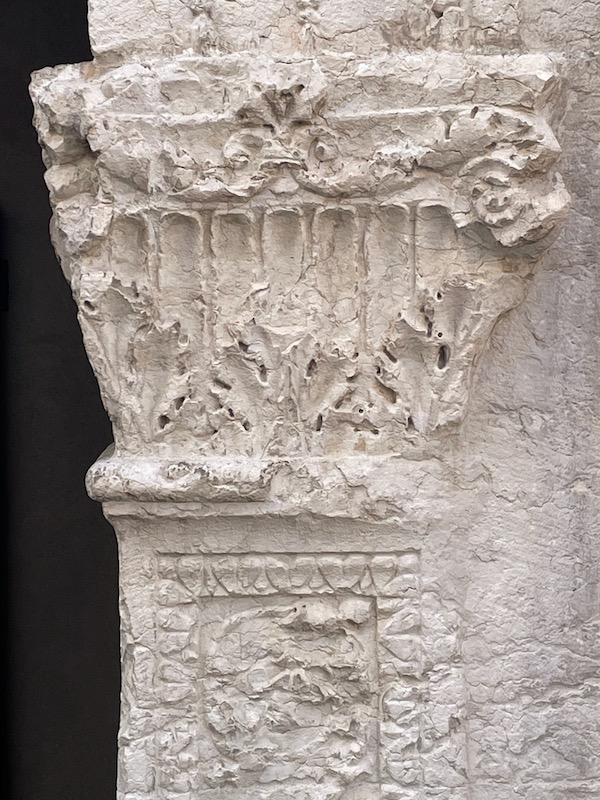
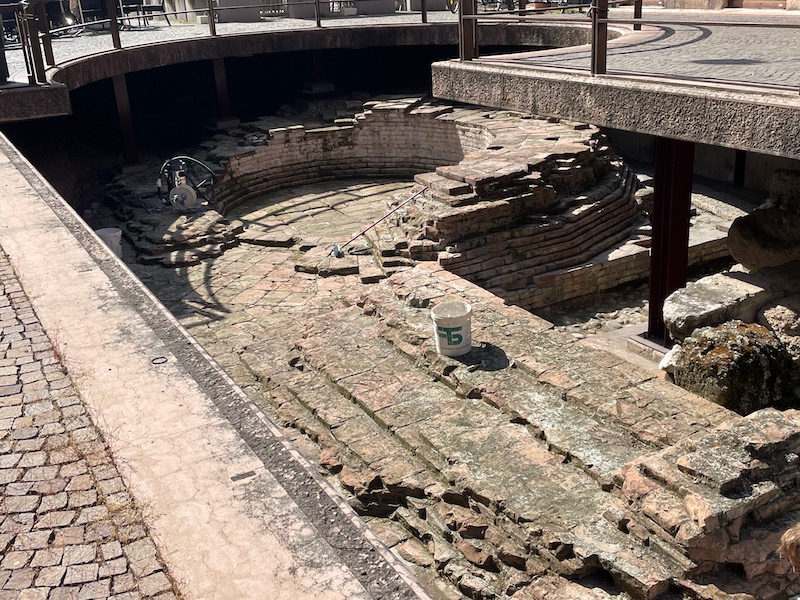
The Palazzo della Ragione (Palace of Reason) sits between two of the main squares: Piazza delle Erbe and Piazza dei Signori. Construction began in 1193. Initially the home of the city council, they moved in 1493 and this palace took a more judicial role (hence the current name). There is a really nice Gothic staircase crafted from pink marble in the courtyard.
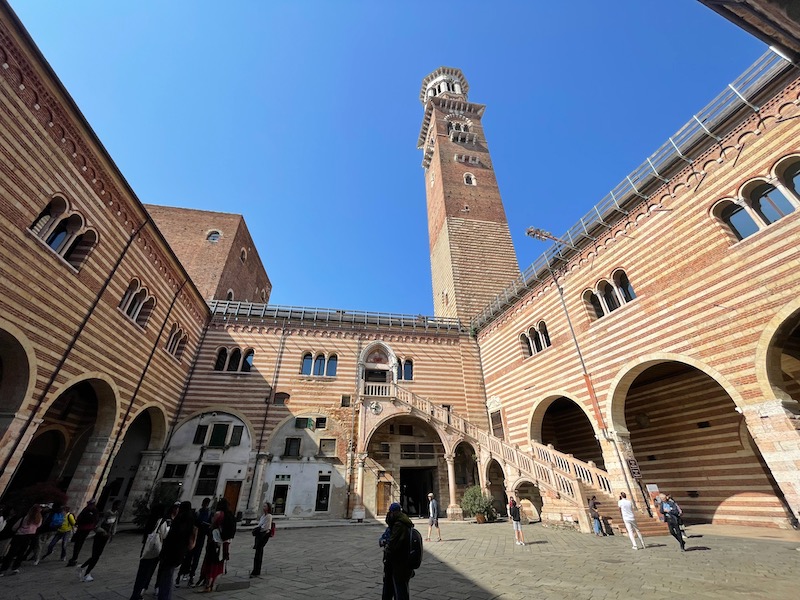
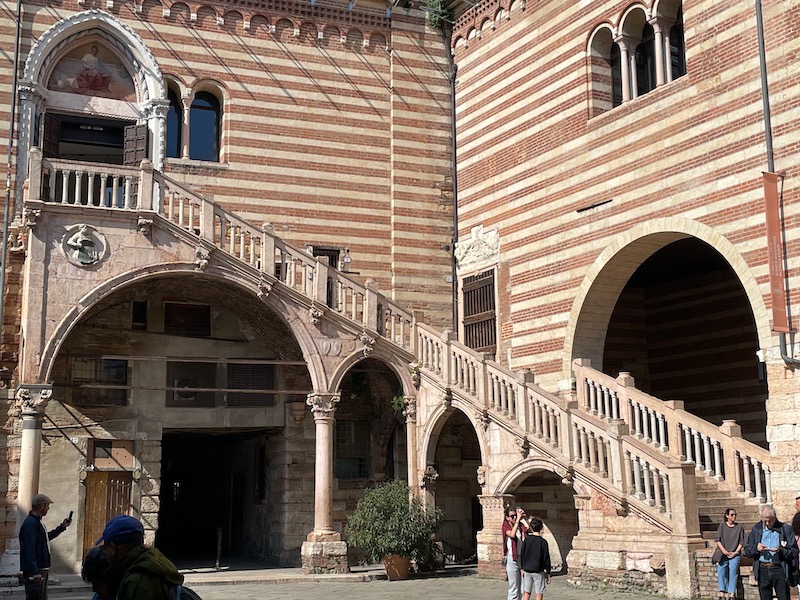
The Lamberti family build the Torre dei Lamberti in the 12th century (1172) during a time when nobles and merchants were building houses with towers, competing with each other to show their wealth and power. It was restored after it was hit by lightning in 1403 and the octagonal upper bell tower was added, making it the tallest tower in the city at that time. Like many buildings, you can see the different timeframes for work based on the different materials used. For example, the marble areas were added in 1779, along with the clock. You can see it from one angle with the courtyard of the Palace of Reason above, and then from the square below.
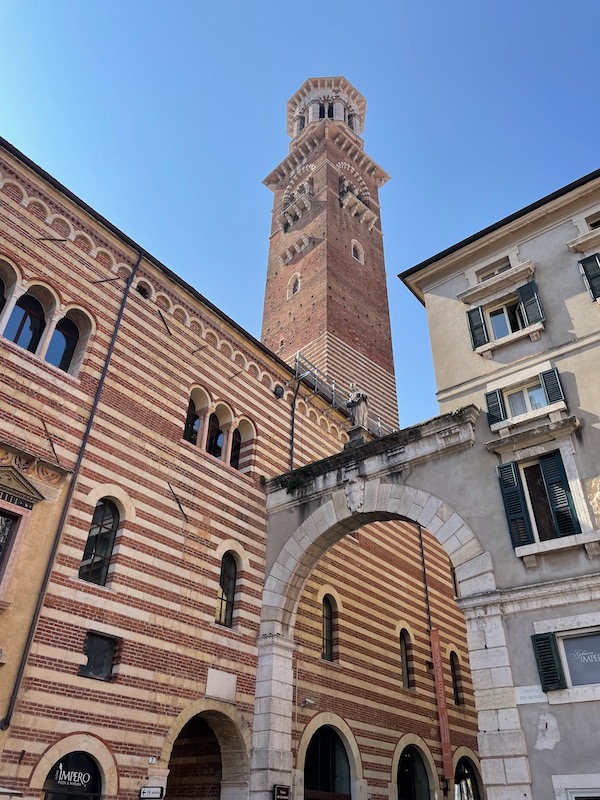
This is the other side of the Palace of Reason, in Piazza dei Signori, but you can see the difference in the façade on the lower part, which is highly decorated.
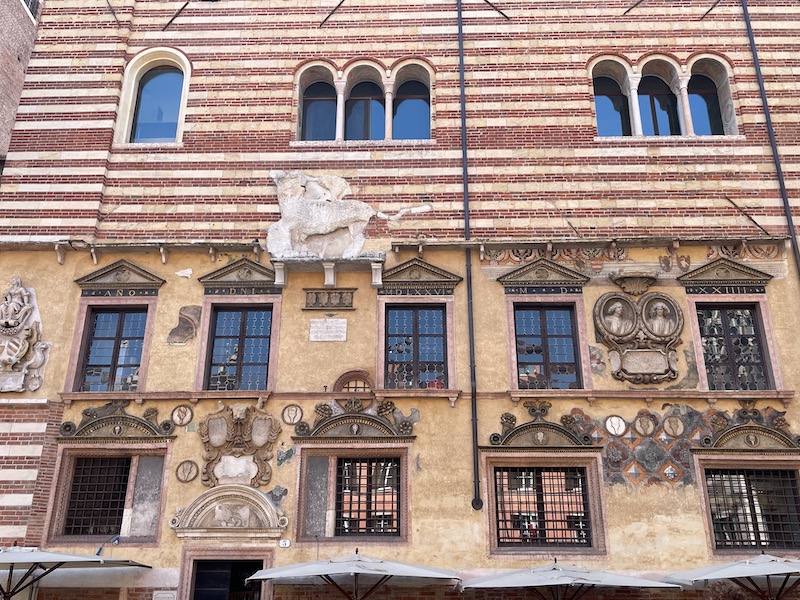
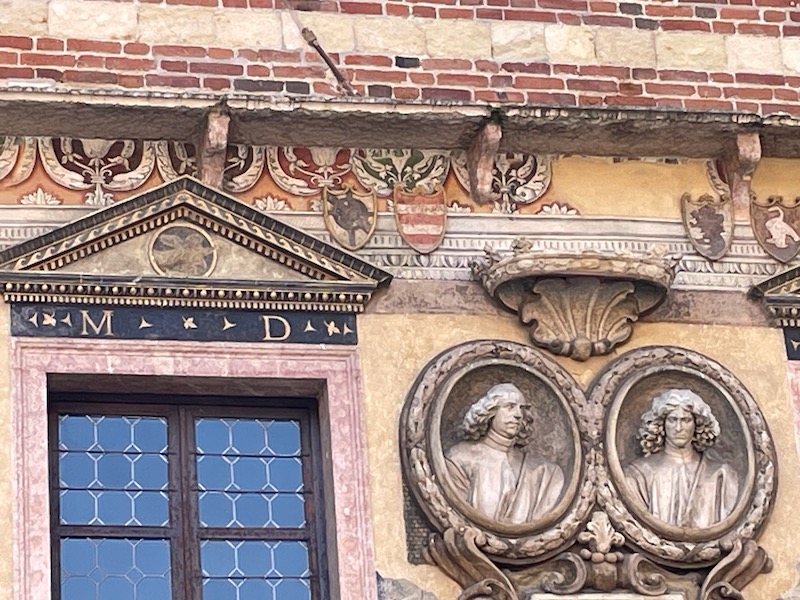

This is another highly decorated doorway and balcony, I really like the scary face!
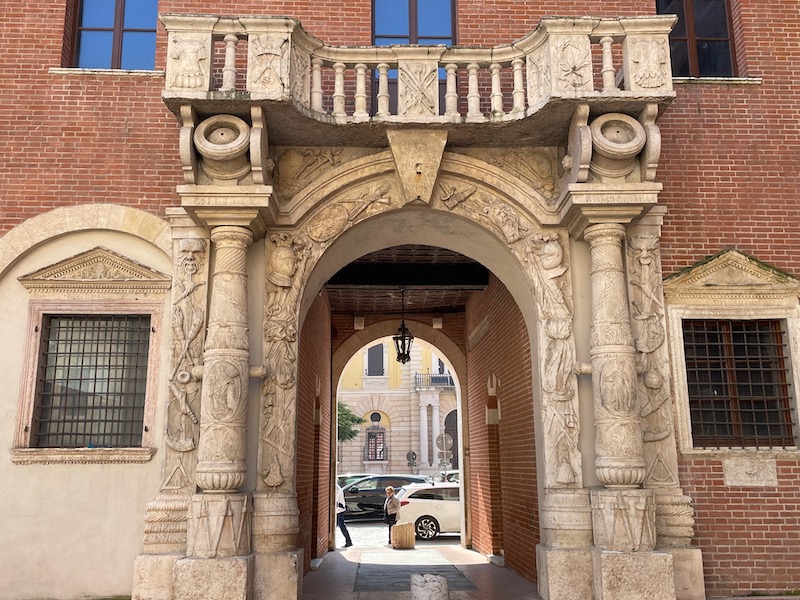
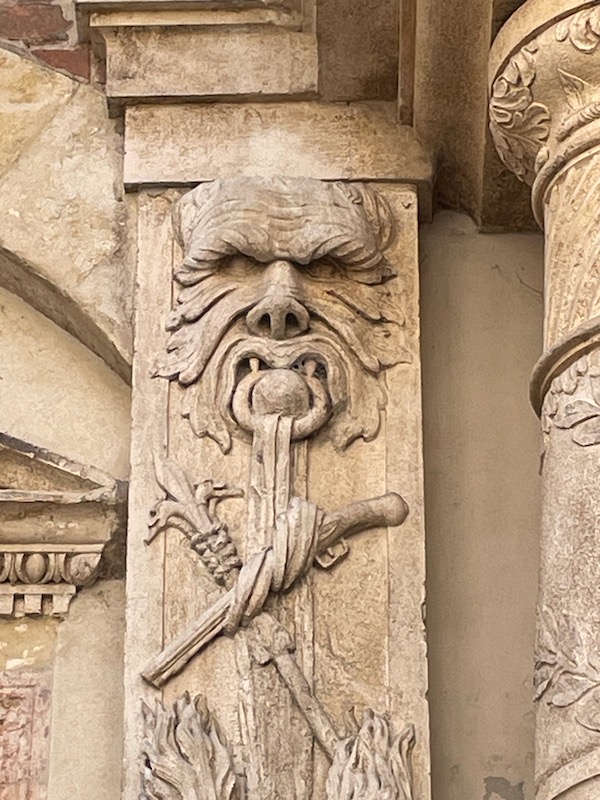
The Scaligeri Tombs are a group of 5 14th-century Gothic monuments that were built to celebrate the della Scala family, 13th and 14th-century rulers of Verona. These tombs are some of the most celebrated monuments of gothic architecture in Verona. Mastino I della Scala ended various conflicts in Verona in 1259. The city council was so pleased with his success that they gave the Scala family hereditary and permanent ruling powers. But like a Shakespearean tragedy, the family began to struggle amongst themselves for power. Each tomb here has a carved sarcophagus with a baldachin or carved covering, topped with a statue of the deceased, shown them riding a horse and wearing armor.
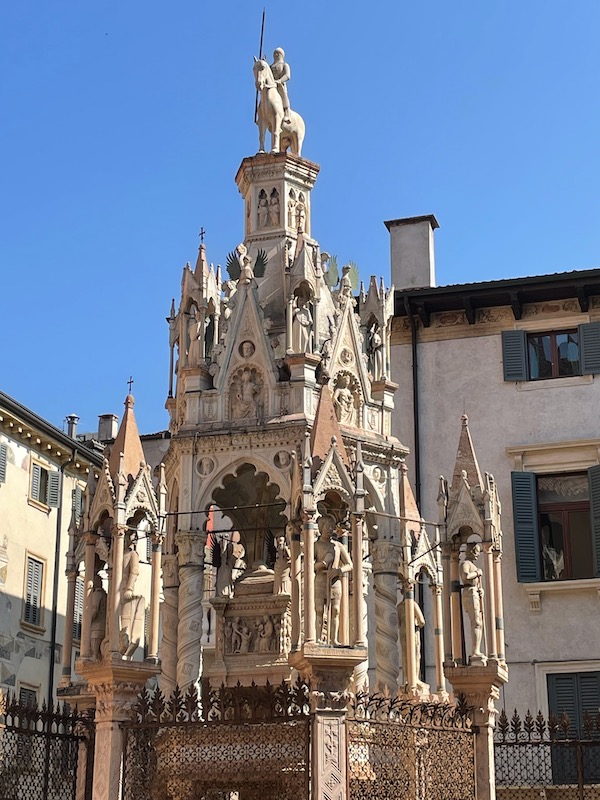
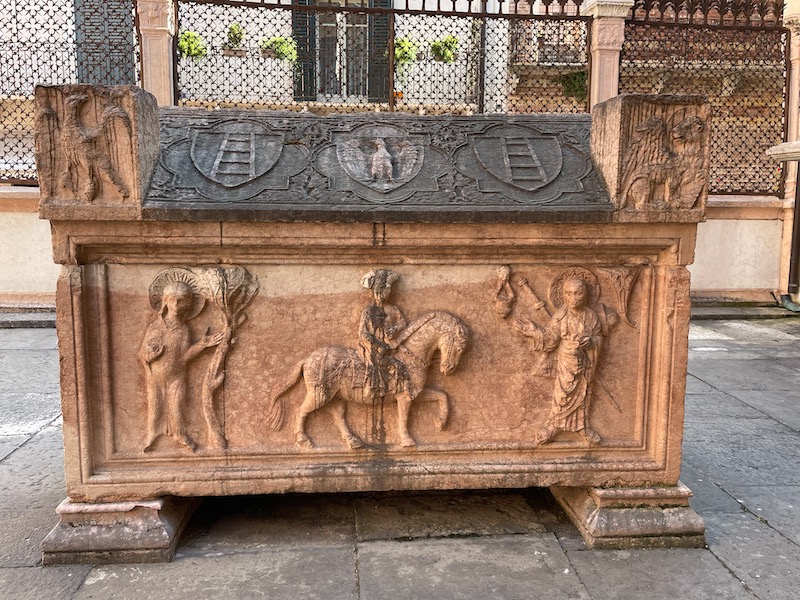
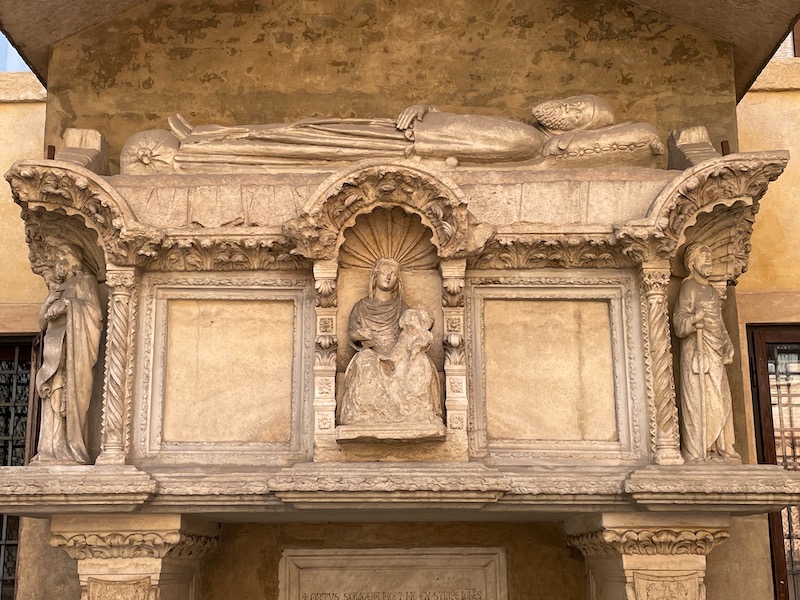
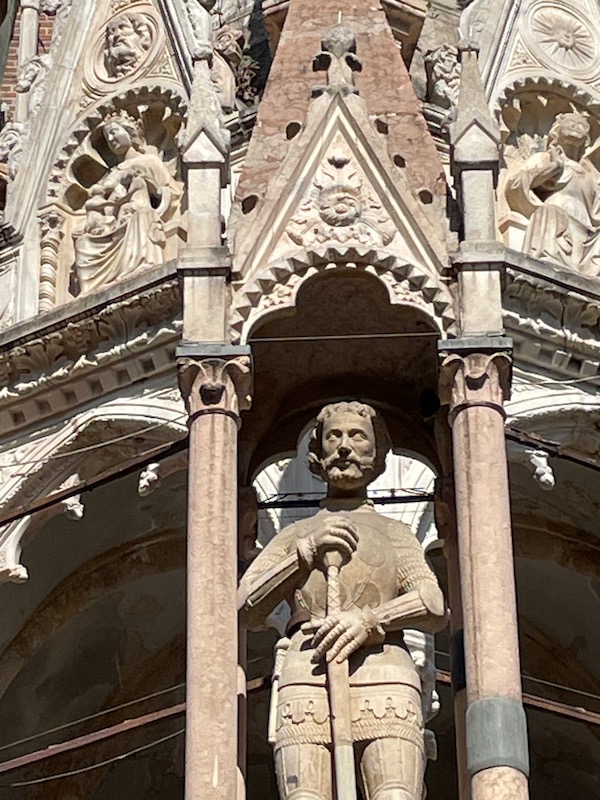
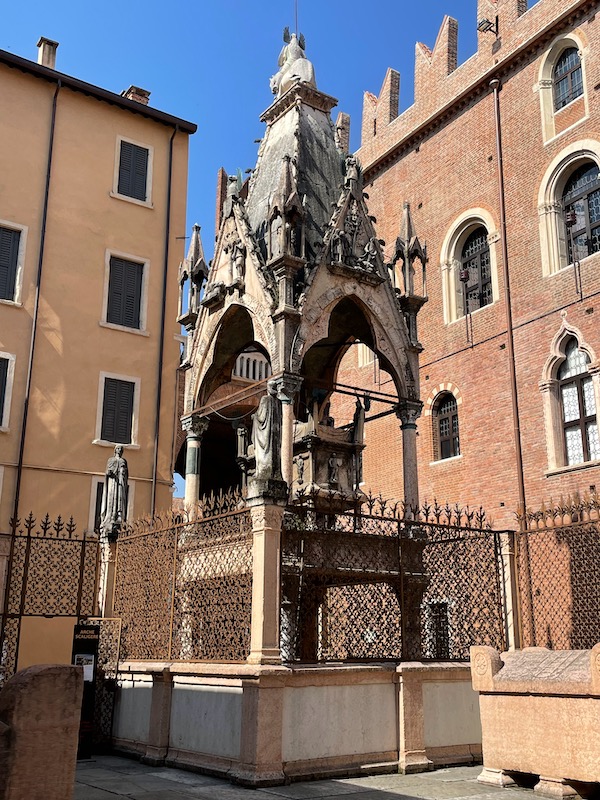
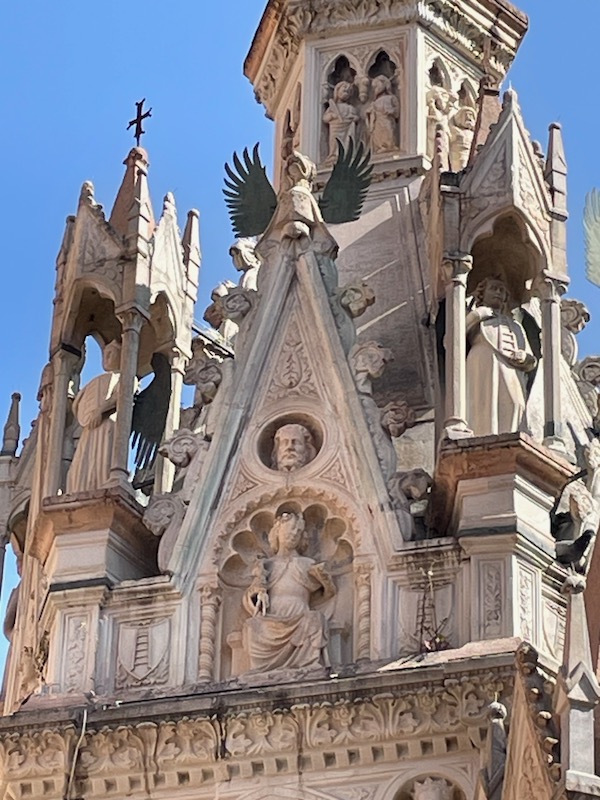
The Piazza delle Erbe is the location of the old Roman Forum, and it holds a large market (which was going the day we visited). At one end of the square is a winged lion statue, known as a Marcian Lion or Lion of Saint Mark, on a column in front of Maffei Palace. The Lion of Saint Mark is a symbol of Venetian rule, and several depictions are seen around town. The Maffei Palace has a Baroque façade topped by statues representing divinities: Hercules, Jupiter, Venus, Mercury, Apollo, and Minerva
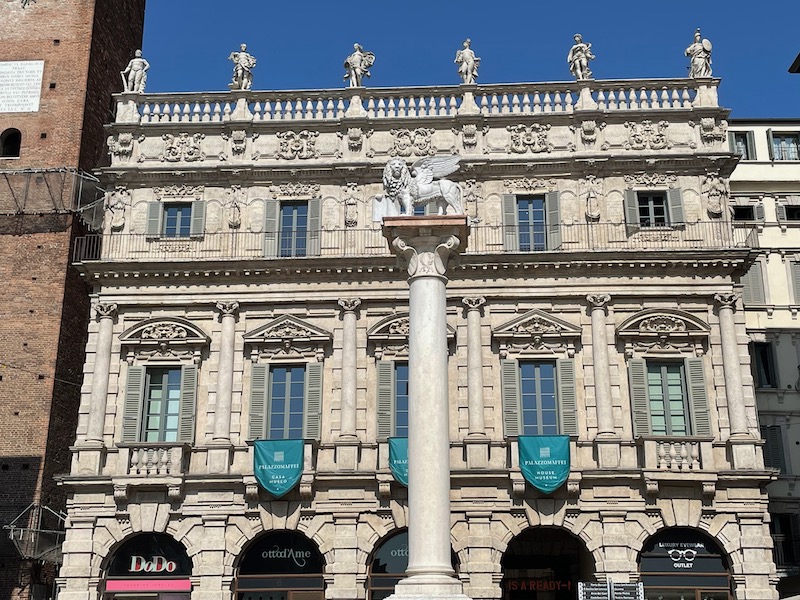
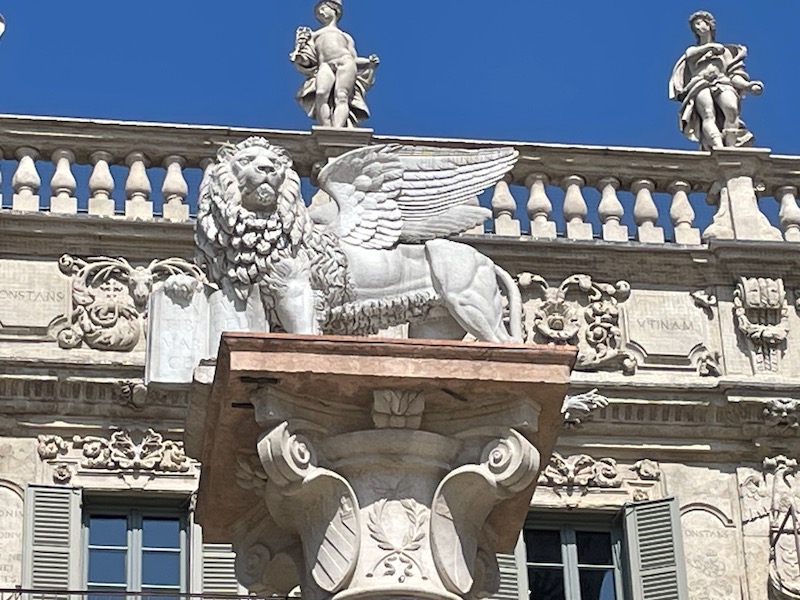
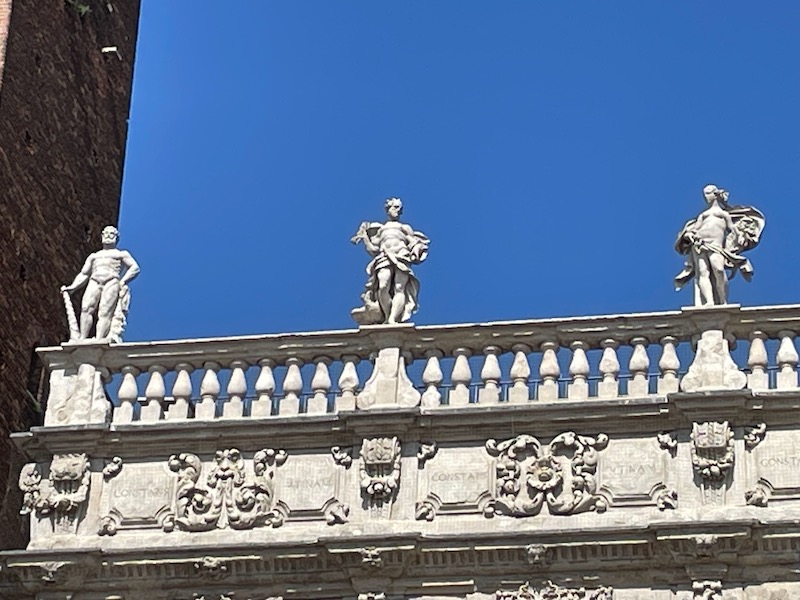
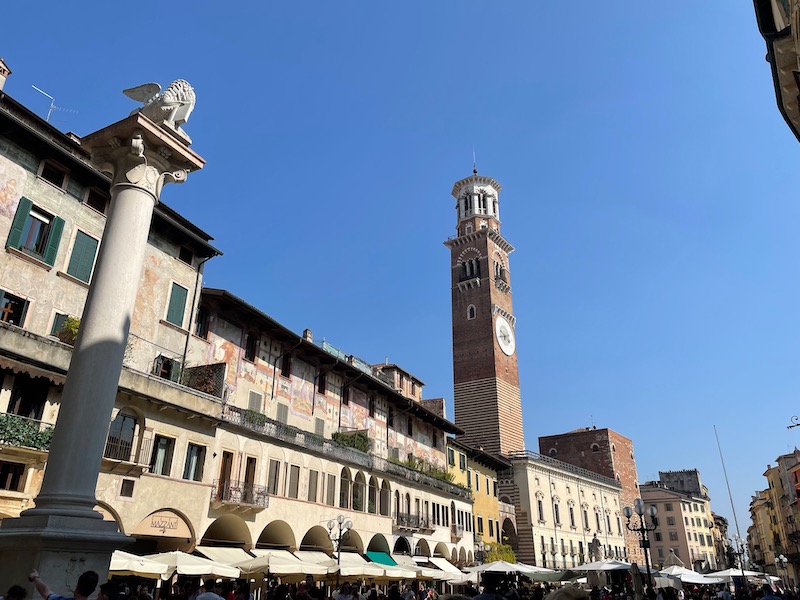
Some of the buildings around the square have frescoed façades, like these.
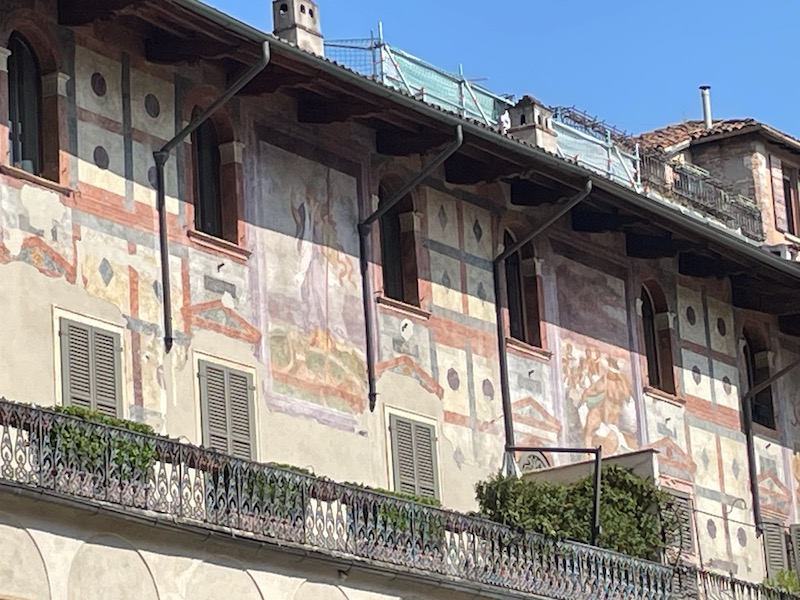
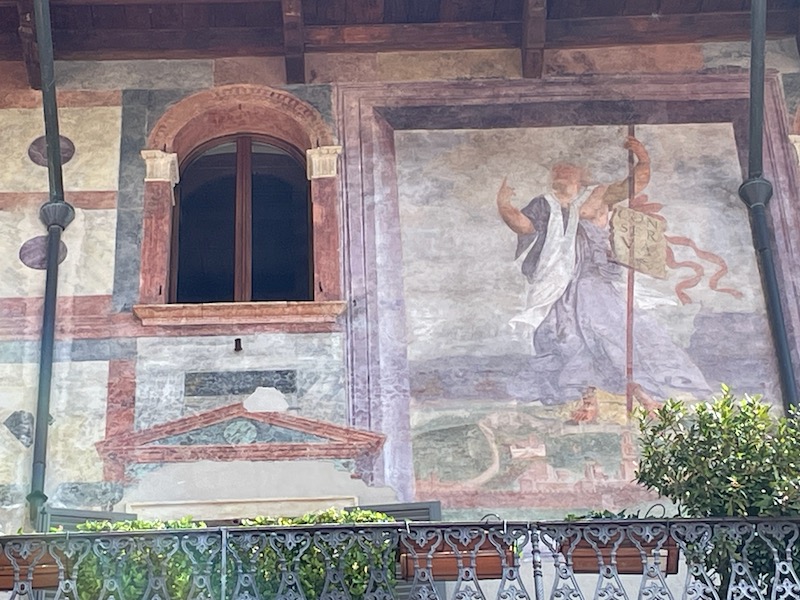
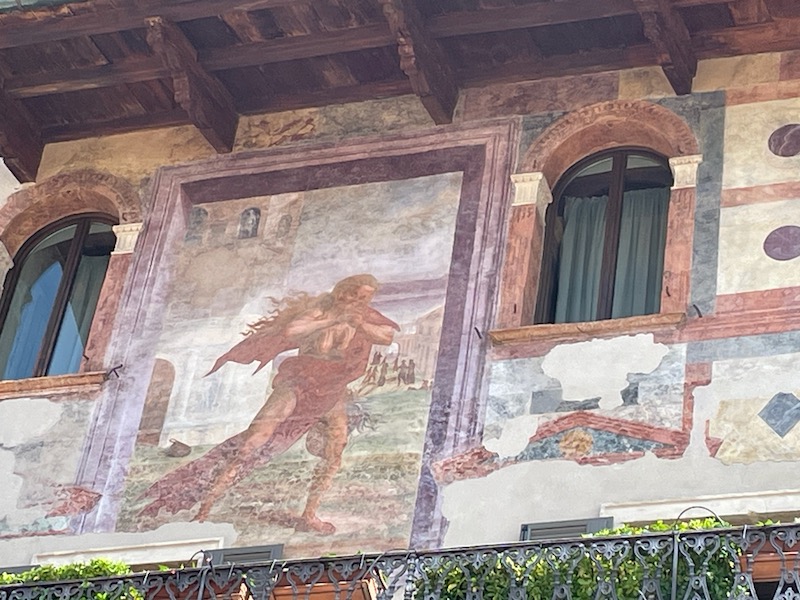
The Church of San Giovanni in Foro dates back to the 12th century and is dedicated to John the Evangelist (not John the Baptist like many other churches). From the outside, it doesn't actually look like a church, being enclosed by other buildings on 3 sides and has just a little tiny entrance portal.
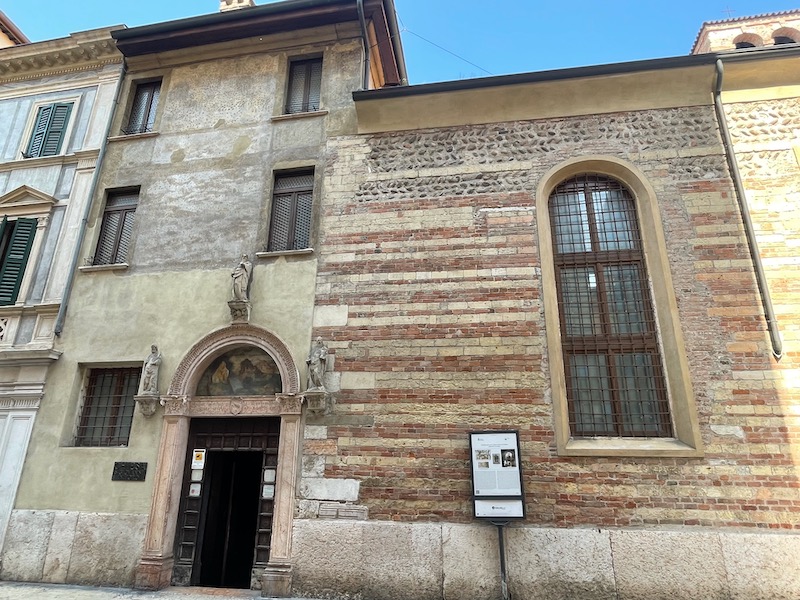
It is a single rectangular hall plan with a gabled roof with exposed trusses. At the end of the 14th century, a cycle of frescoes was done inside the church, of which only those depicting a Madonna del Latte, a Saint John the Baptist, and a Saint John the Evangelist on the left of the presbytery have survived.
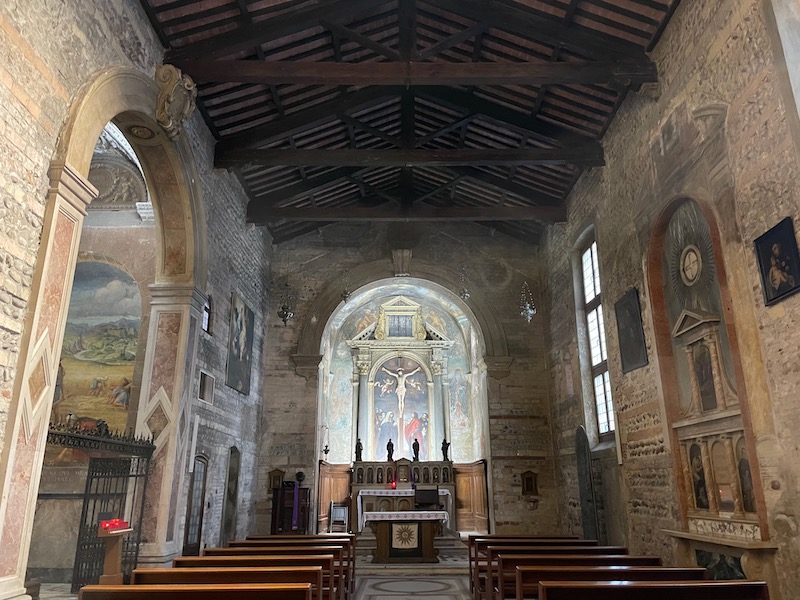
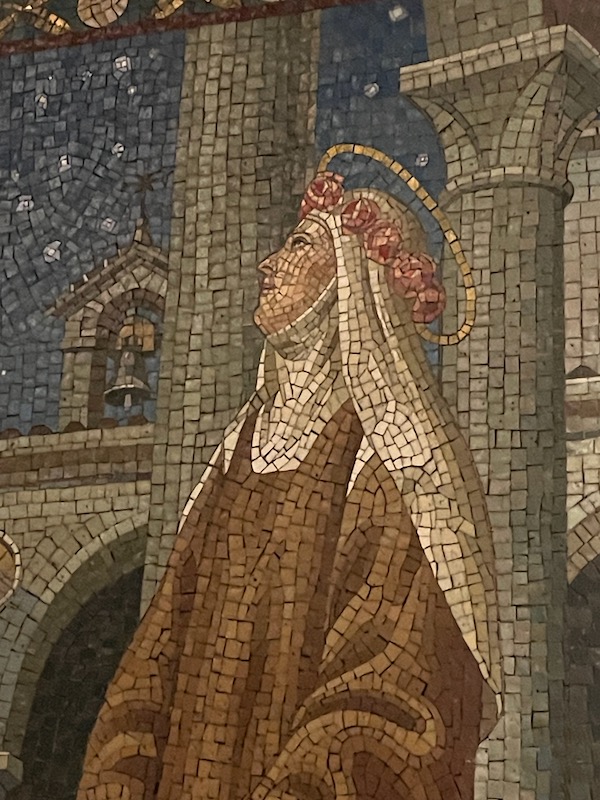
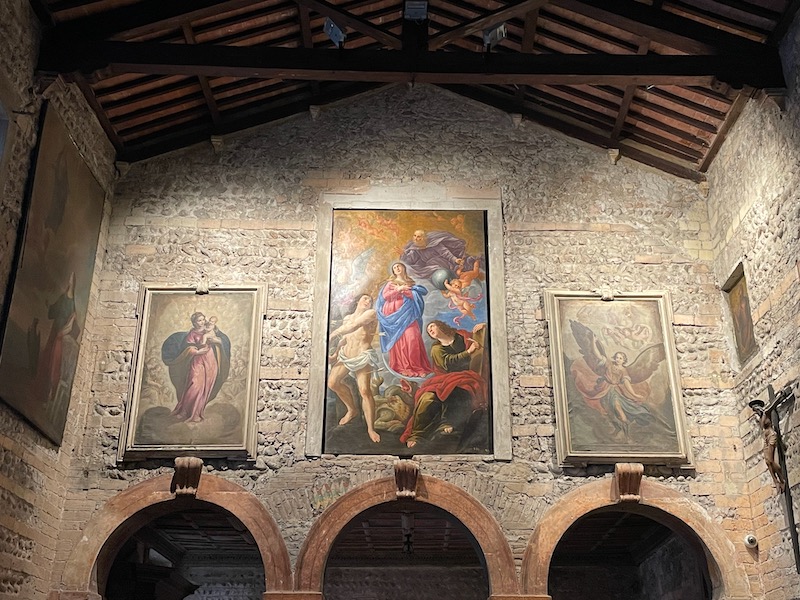
The Verona Cathedral complex includes the Cathedral, the Battistero di San Giovanni in Fonte, and a small archaeological area with remains of the first Paleo-Christian Basilica that was consecrated between 362 and 380 AD. The lunette depicts the Virgin holding the Christ child in high relief, centered between two low relief scenes, the Annunciation to the Shepherds (left) and the Adoration of the Magi (right).
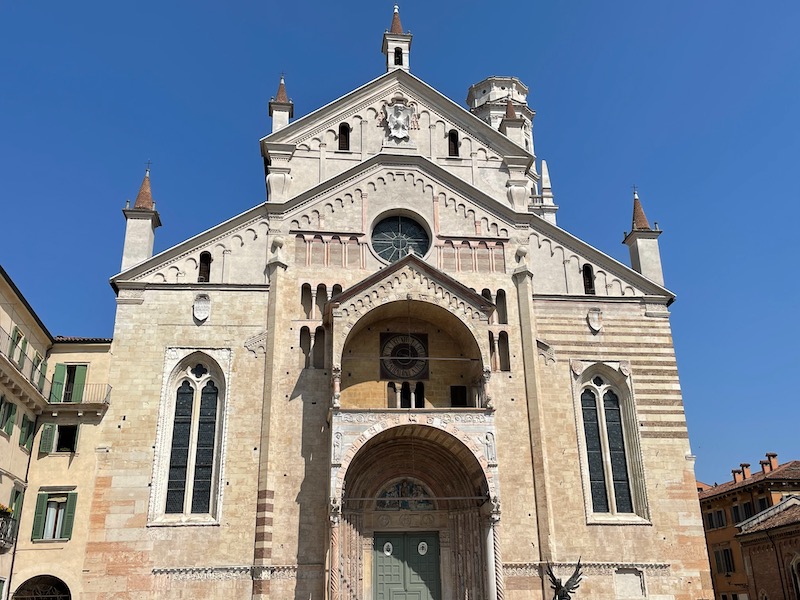
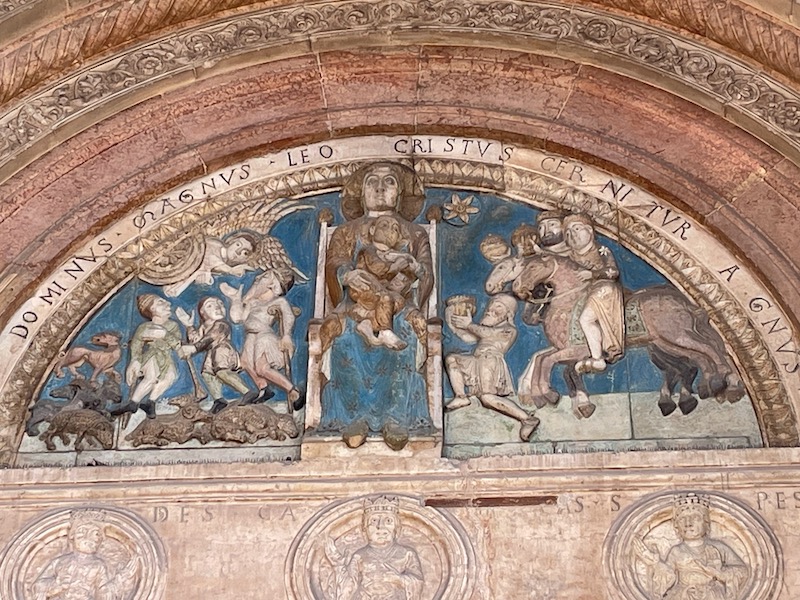
The current appearance of the interior dates from the 15th-century renovations. It has a nave and two aisles divided by tall pilasters in red Verona marble, which support Gothic arcades. Some of the chapels here are a bit interesting, as they are mostly flat with just a "niche" for the altarpiece, but the walls around are highly decorated around each niche, but then blank walls between each chapel.
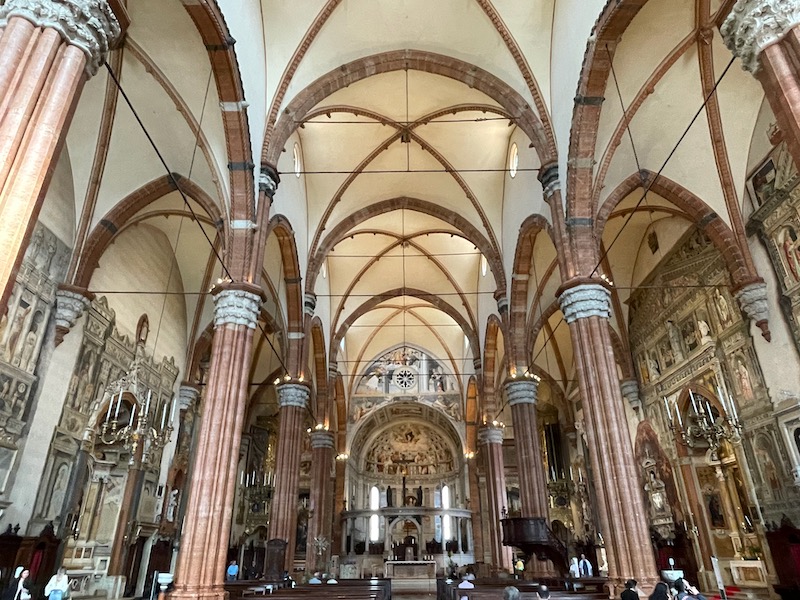
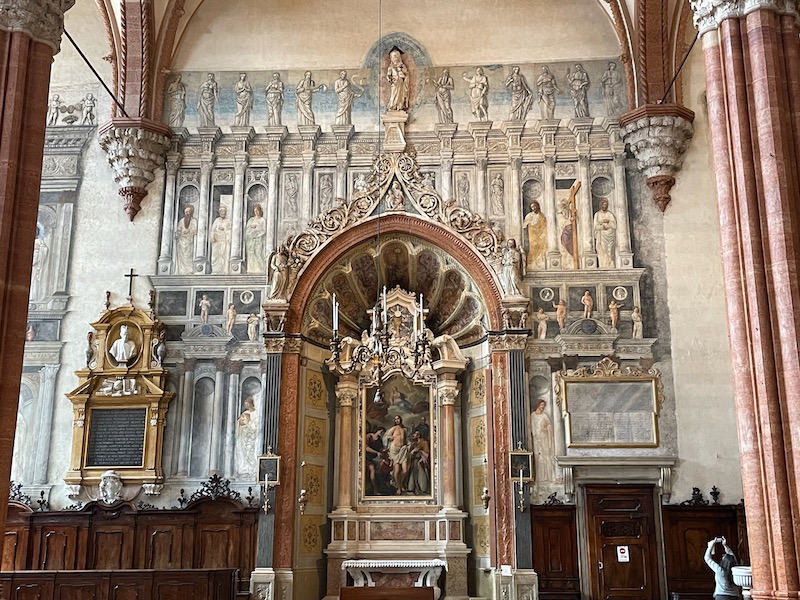
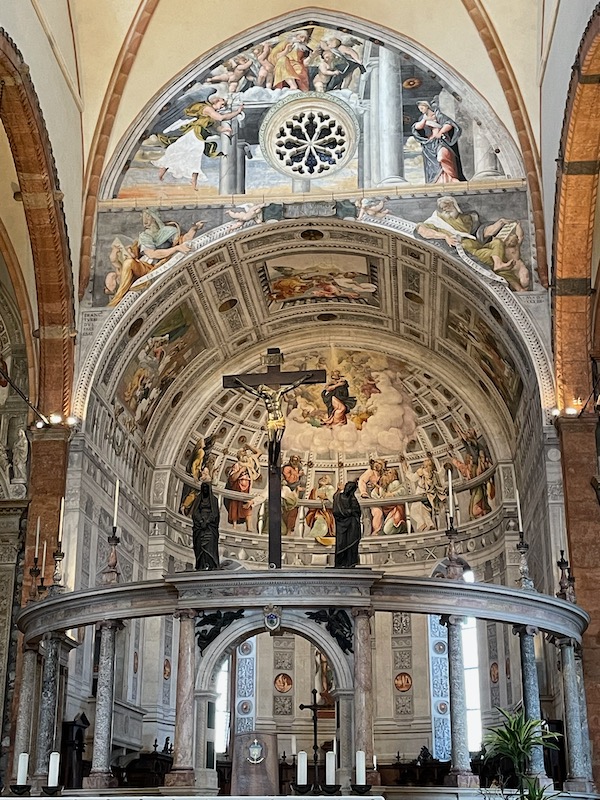
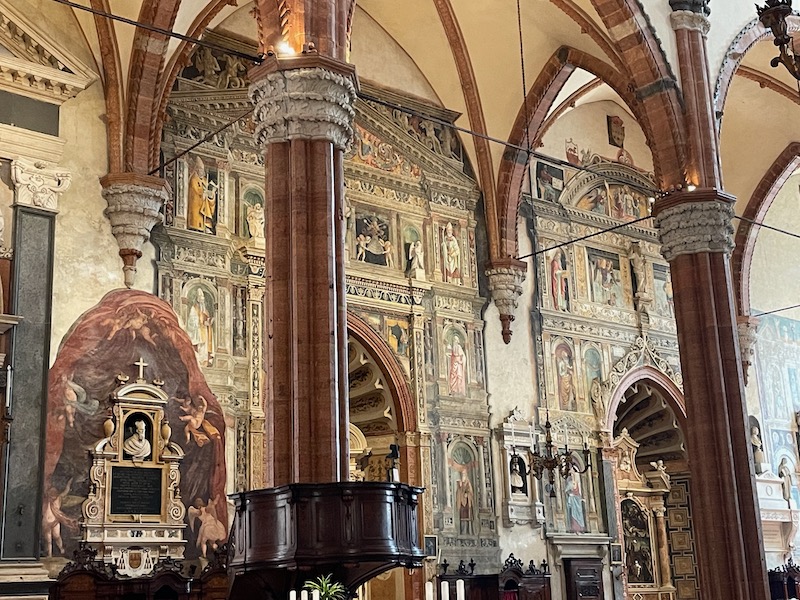
The choir was done in the 16th-century choir with the frescoes in the apse.
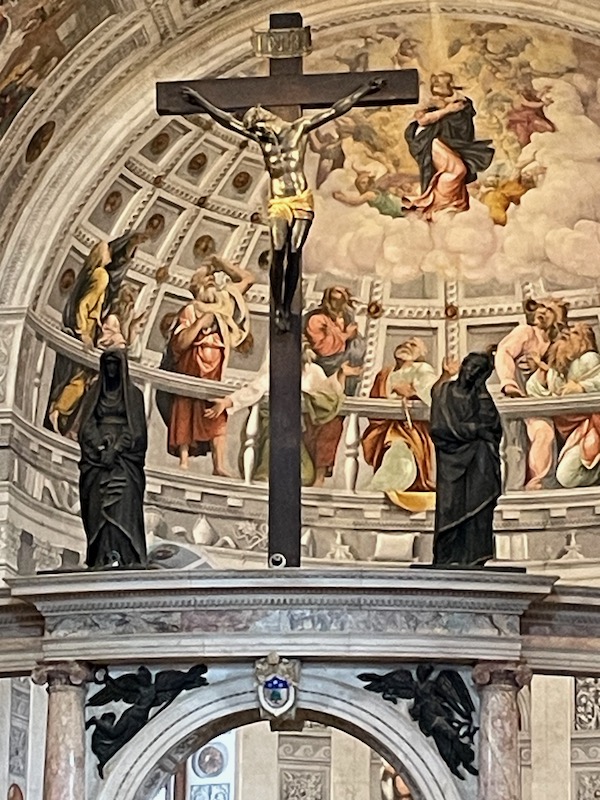
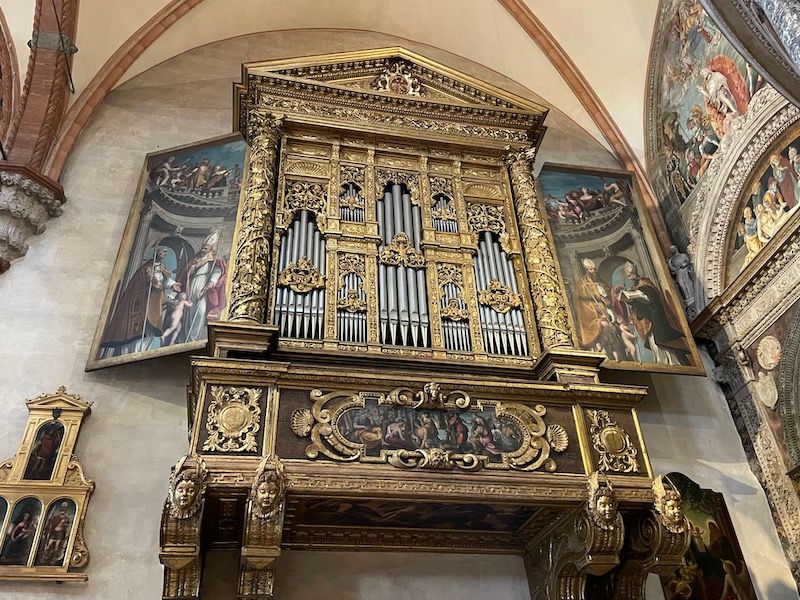
There are 2 organs, one on each side of the nave. They are housed in cases with painted decorations, this one showing the 4 Veronese bishops (2 on each side).
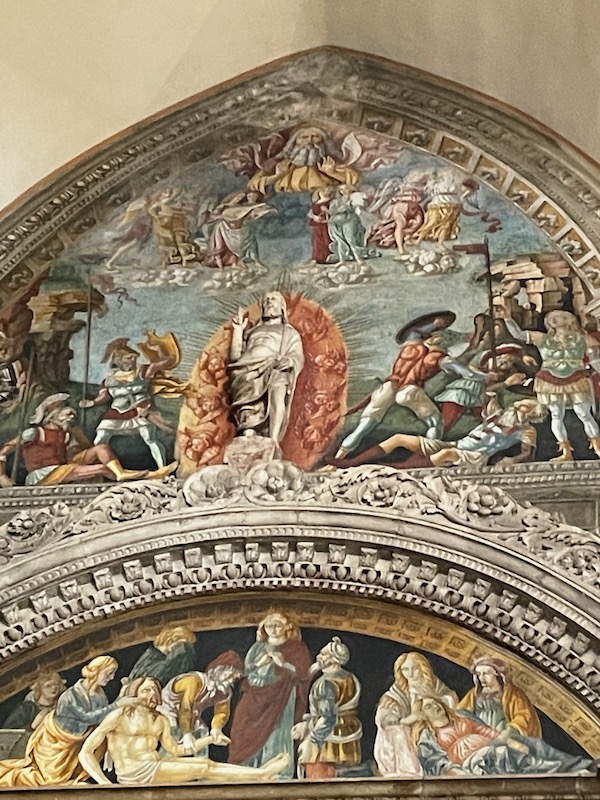
There have been multiple churches built here before the current Cathedral (sometimes referred to as Church A, Church B, and the Church of Sant'Elena). There are remains of mosaic floors from a couple of these churches which are still visible.
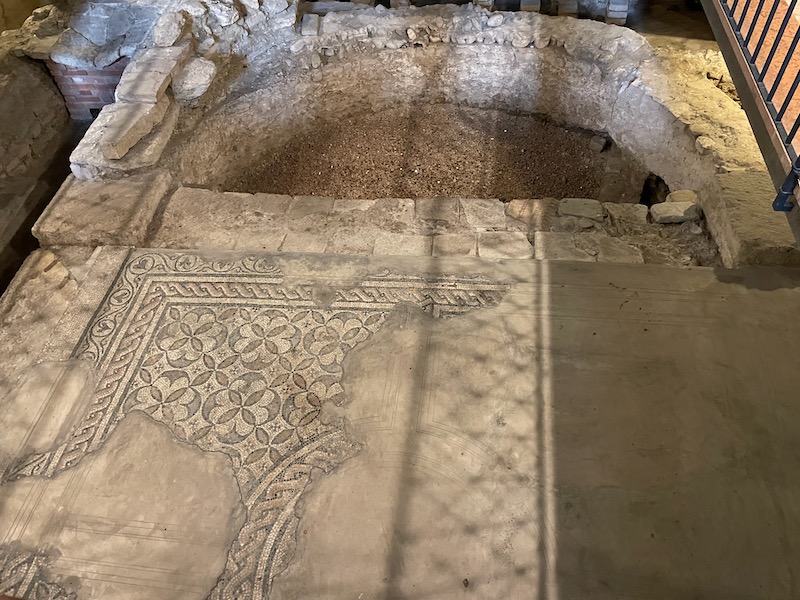
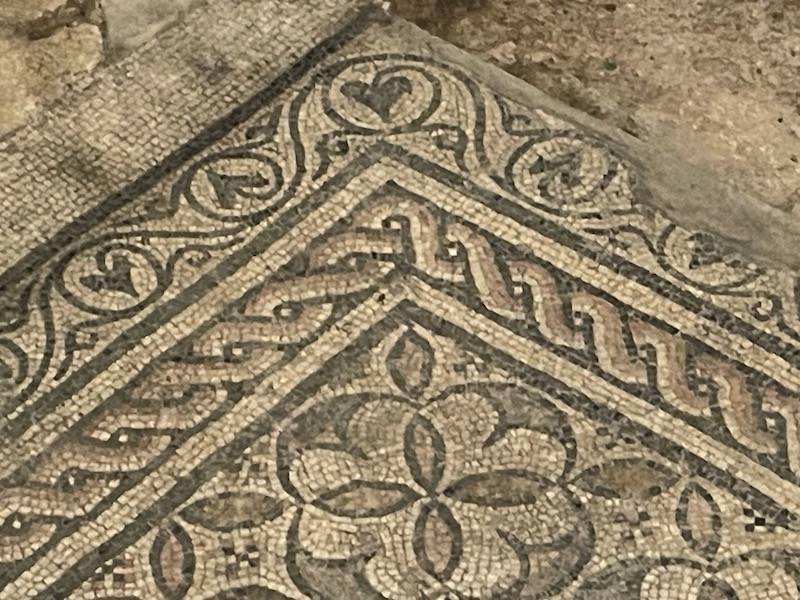
Here is a small view of the archeological area with some of the foundations of the 4th century church. Along the back wall is the Triptych and the Hanging Bone. The Triptych was carved in the 14th century, will Madonna and child, 2 saints on either side, and a little figure kneeling on the left-hand side, which would be the sponsor who paid for the work. Above it is the "hanging bone", which supposedly is a bit curious, like why would you hang a bone in a church. However, in other Italian churches from the Medieval period, other bones or fossil remains of large animals have been found, perhaps a symbolic representation of the struggle between good and evil.
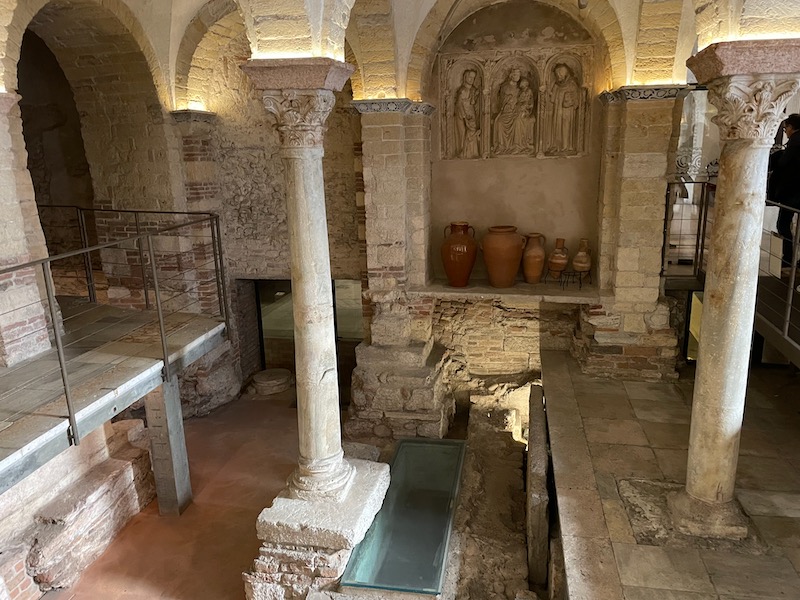
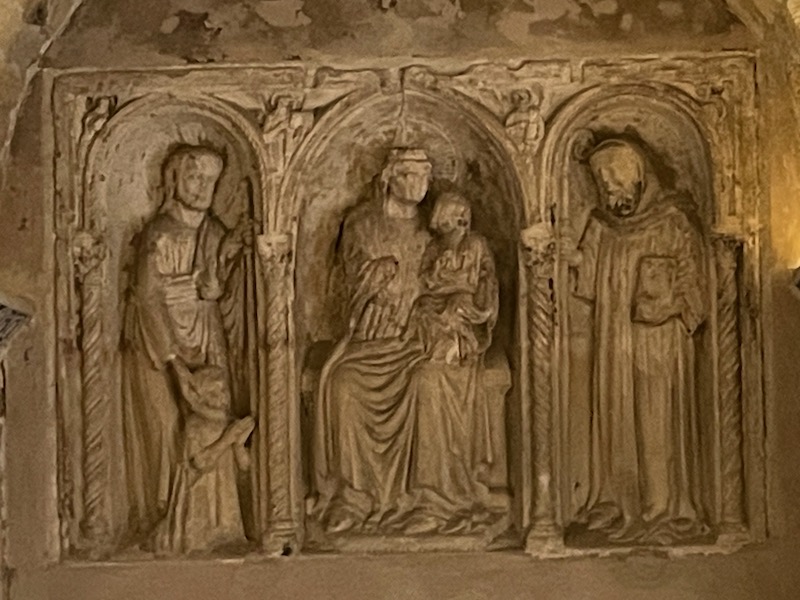
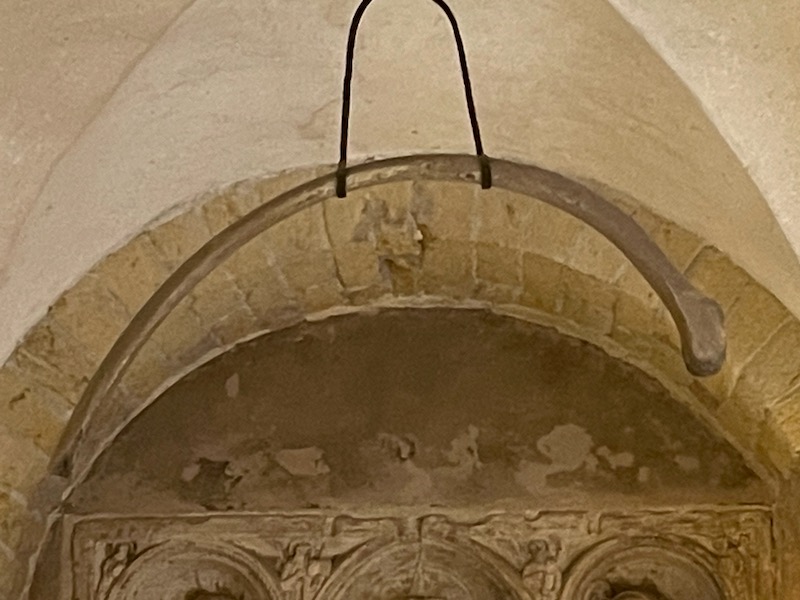
Next to the Cathedral is the Baptistery of San Giovanni in Fonte. The original church was built in the 7th or 8th century but damaged by an earthquake in 1117, so it was rebuilt in 1123. It was later changed from being a church to being the Baptistery of the Cathedral. Due to this, the shape is not the typical octagonal shape of Baptistries.
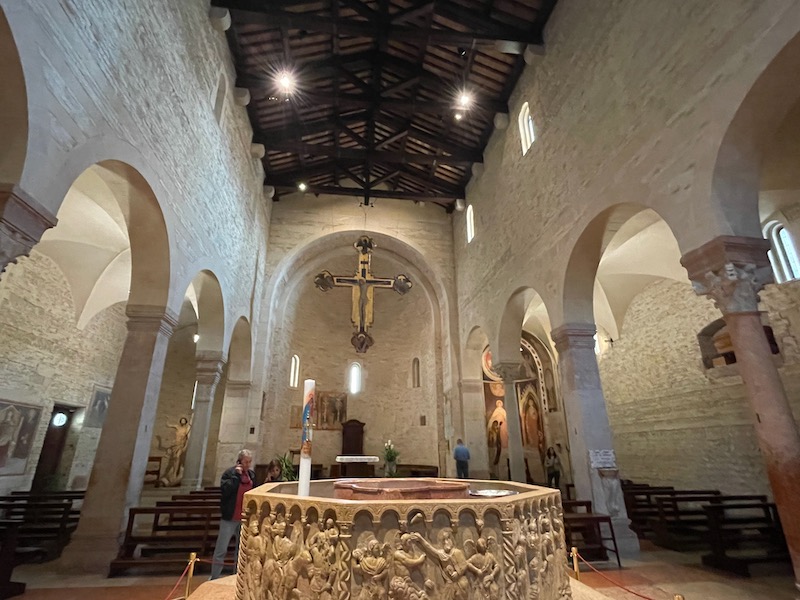 The octagonal baptismal font was built at the end of the 12th century, with depictions of the Annunciation, the Visitation, the Nativity, the Annunciation to the Shepherds, the Adoration of the Magi, Herod ordering the massacre of the innocents, the massacre of the innocents, the flight into Egypt, and the Baptism of Christ .
The octagonal baptismal font was built at the end of the 12th century, with depictions of the Annunciation, the Visitation, the Nativity, the Annunciation to the Shepherds, the Adoration of the Magi, Herod ordering the massacre of the innocents, the massacre of the innocents, the flight into Egypt, and the Baptism of Christ .
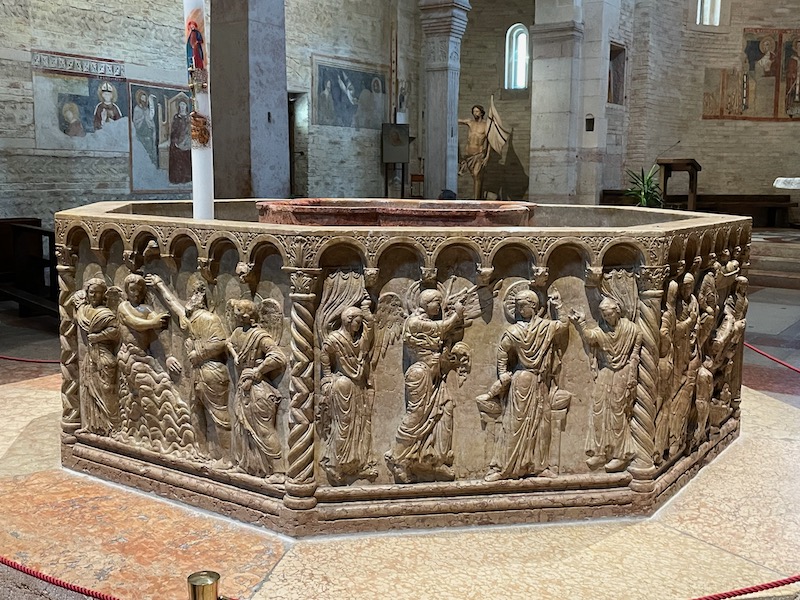
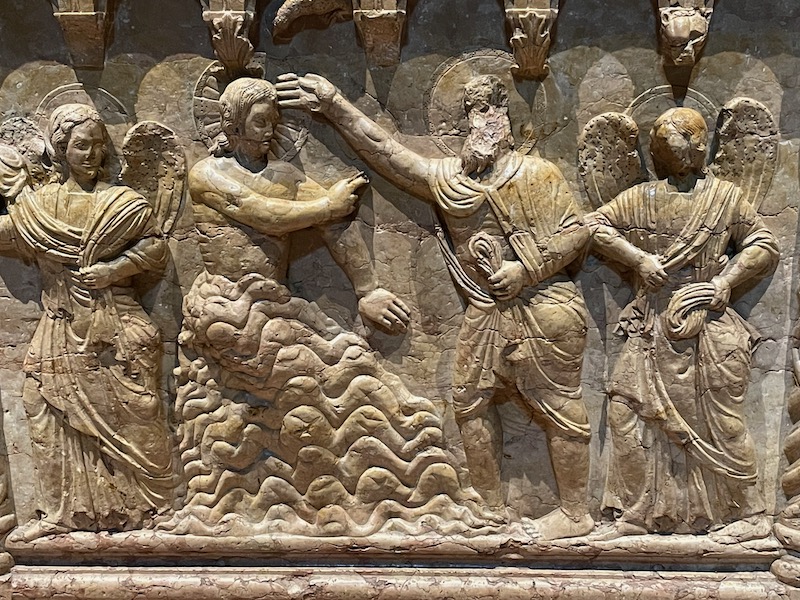
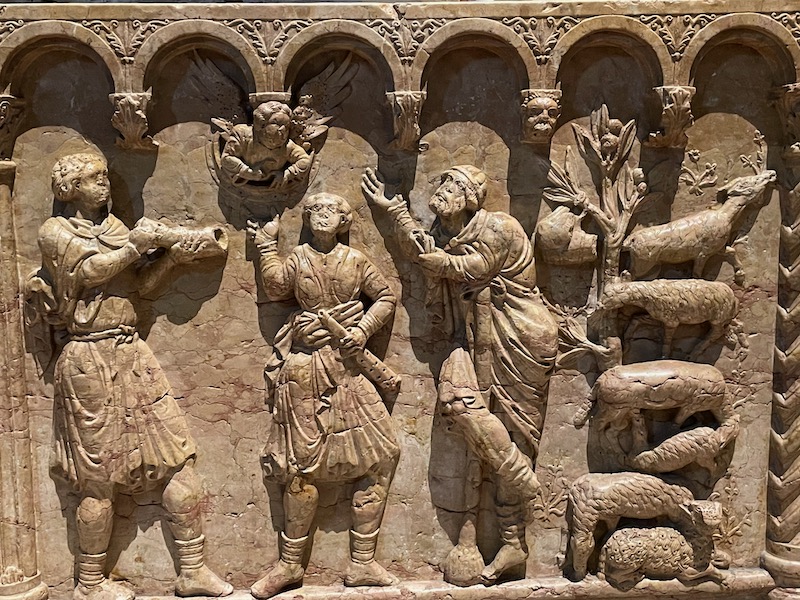
In the 14th century the interior was decorated with frescoes, some fragments of which are still visible.
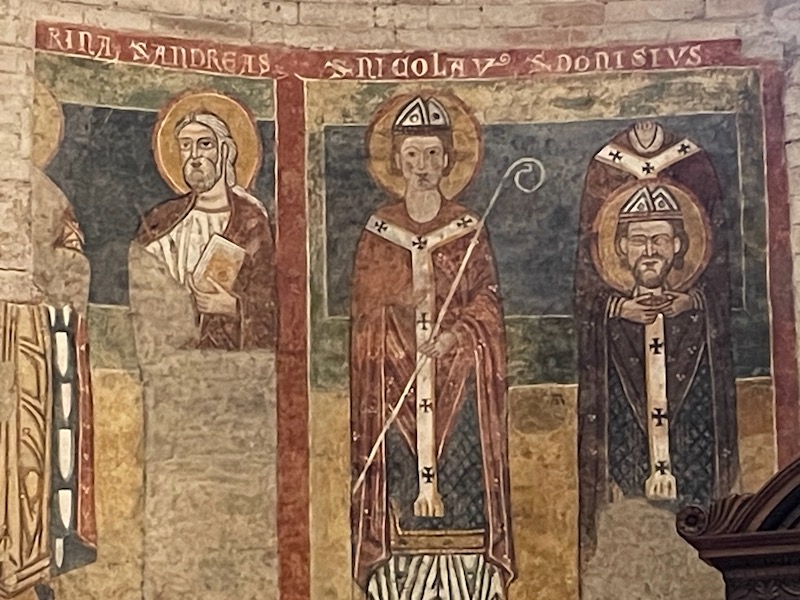
The Basilica di Santa Anastasia sits on the location of an older church that was dedicated to a 4th century martyr (where the name comes from) and it is situated at the end of the decumanus maximus: the main Roman road in Verona that connected Porta Borsari to the former Postumio Bridge. The Dominicans settled here around 1209 and started building this Gothic Basilica. The facade has 3 vertical brick sections and a simple rose window. If you look above the door, the façade is "unfinished", with a rough look. The arches around the door are in red, white and black marble (you will see these colors again inside and I will talk about them).
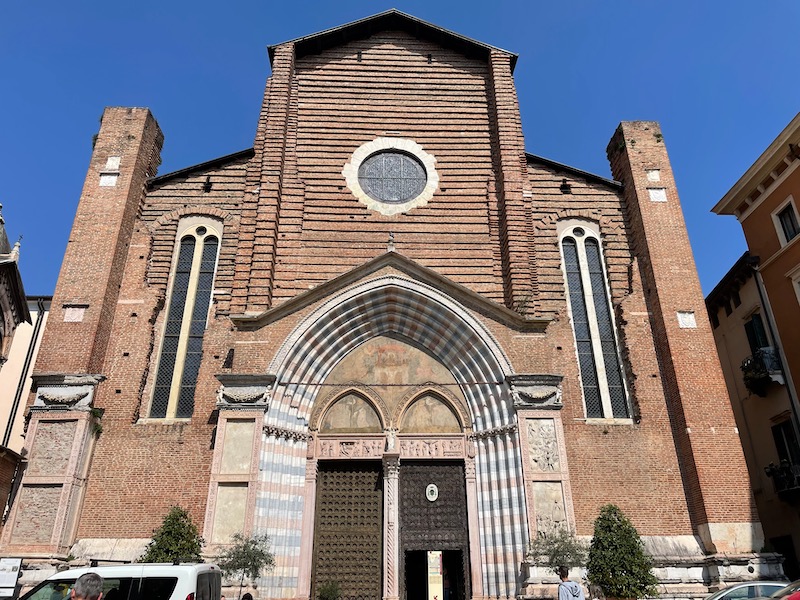
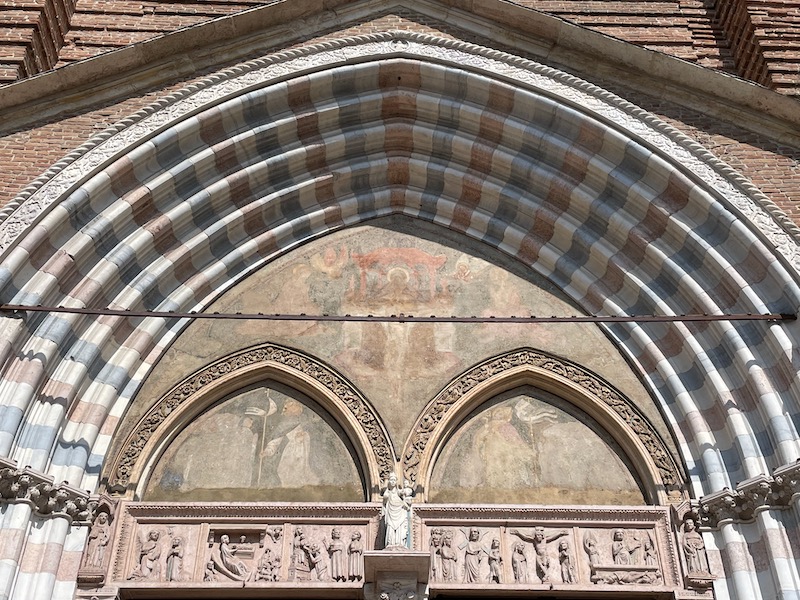
The frescoes over the doorway are almost impossible to see, but the bas-relief below those have 6 representations in chronological order of the life of Christ: the Annunciation, the Nativity, the Adoration of the Magi, the Way to Calvary, the Crucifixion and the Resurrection.

The interior is divided into 3 sections covered with cross vaults. There are chapels along both sides as well as on both sides of the main presbytery.
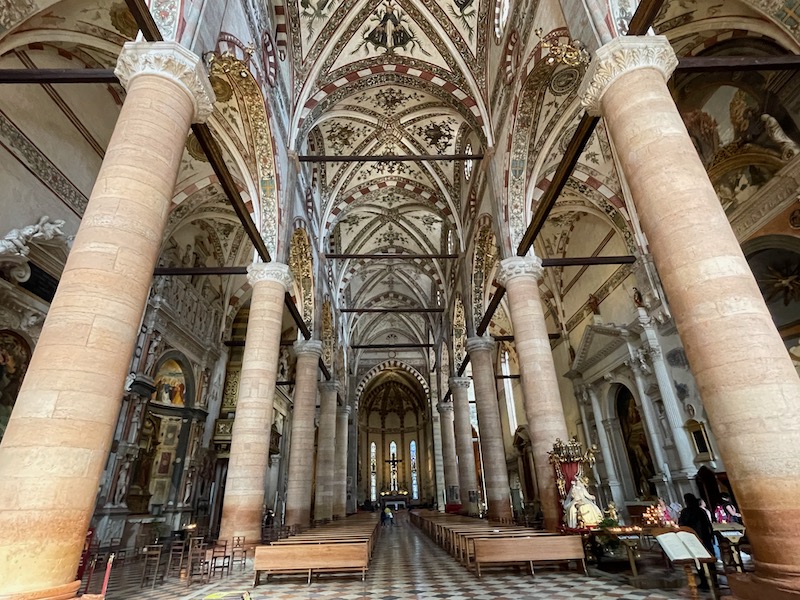
The ceilings down the central nave are highly painted.
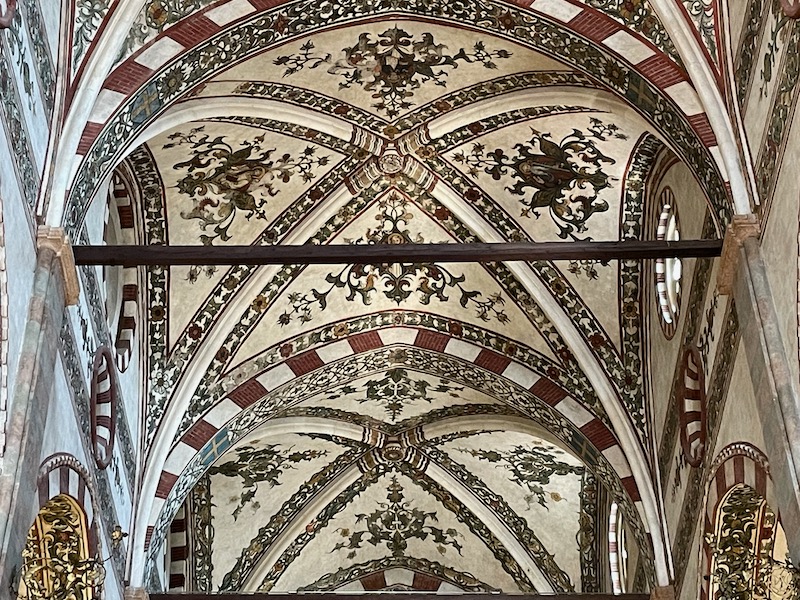
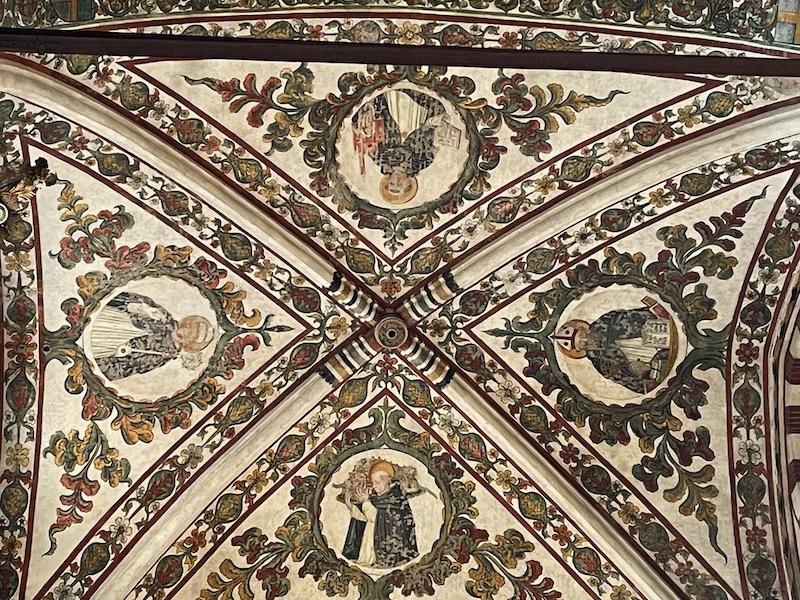
The floor is impressive. It was started in 1462 and this is still the original floor. You see the same 3 colors that you saw on the doorway: The white is white Istrian marble and the black Basanite marble recall the robes of the Dominicans, and the red marble recalls that the church is dedicated to St. Peter the Martyr of Verona. In the center of the transept is a "rose" with a black and white rayed shield, the symbol of the Dominican Order, in the center.
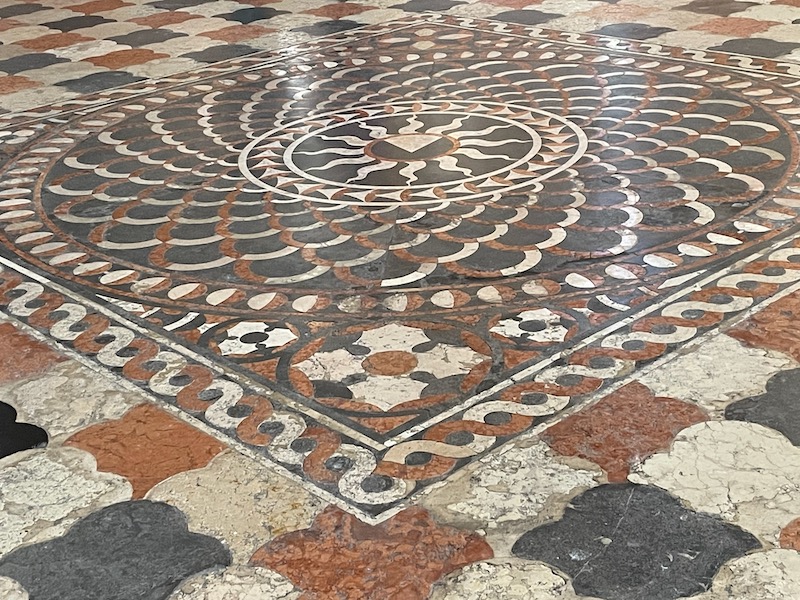
The altar of the main chapel was restored in 1952. On the left side of the chapel is a fresco from 1432 depicting the Annunciation and the mausoleum of Cortesia Serego, a captain who worked for the powerful family of the Scaligeri, Lords of Verona.
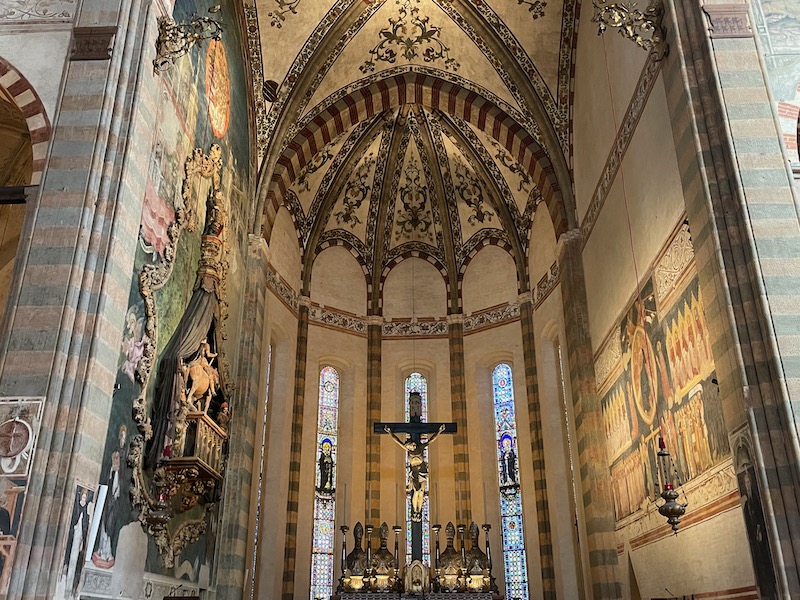
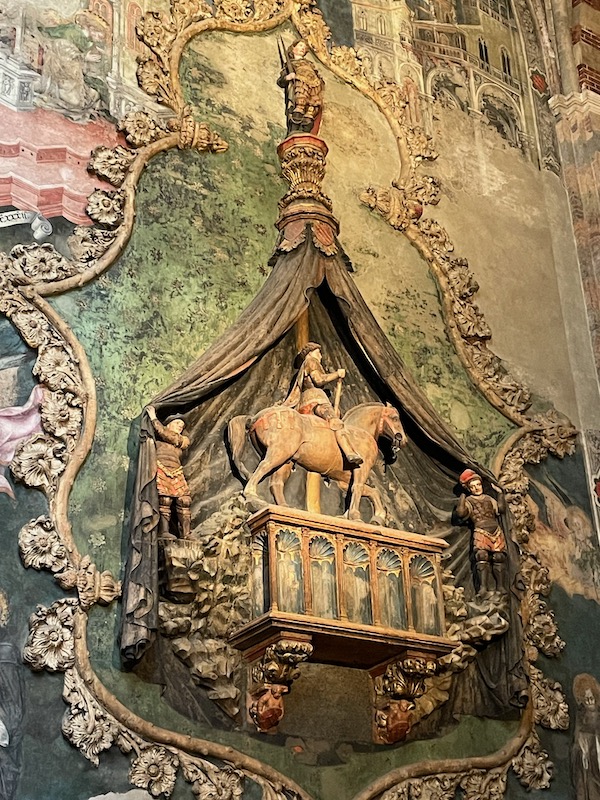
The Pellegrini Chapel contains the tomb of the Pellegrini family. The walls are covered in a series of 24 terracotta tablets telling the story of Christ's life, done in the 14th century. The chapel is best known for this fresco located on the archway, a masterpiece by Pisanello named Saint George and the Princess. I am only showing the right-hand side, which depicts Saint George's leaving the princess ... the other side is pretty much destroyed.
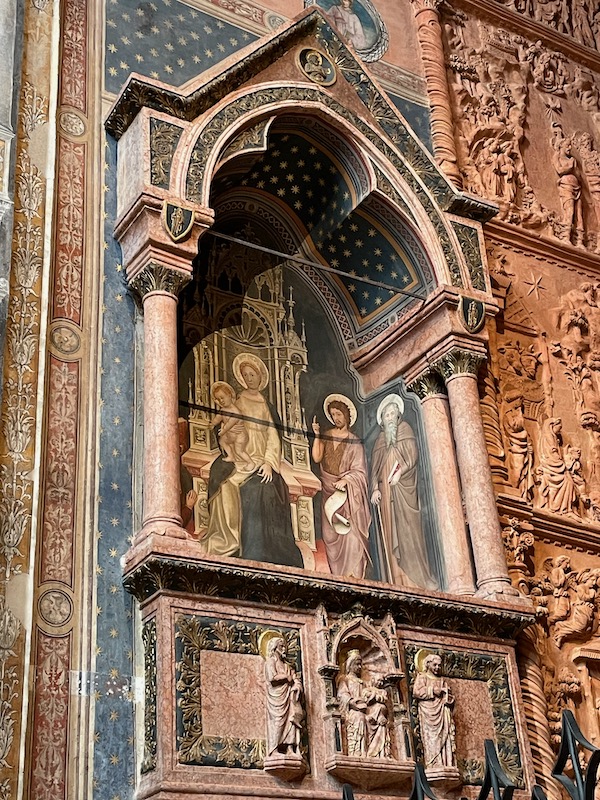
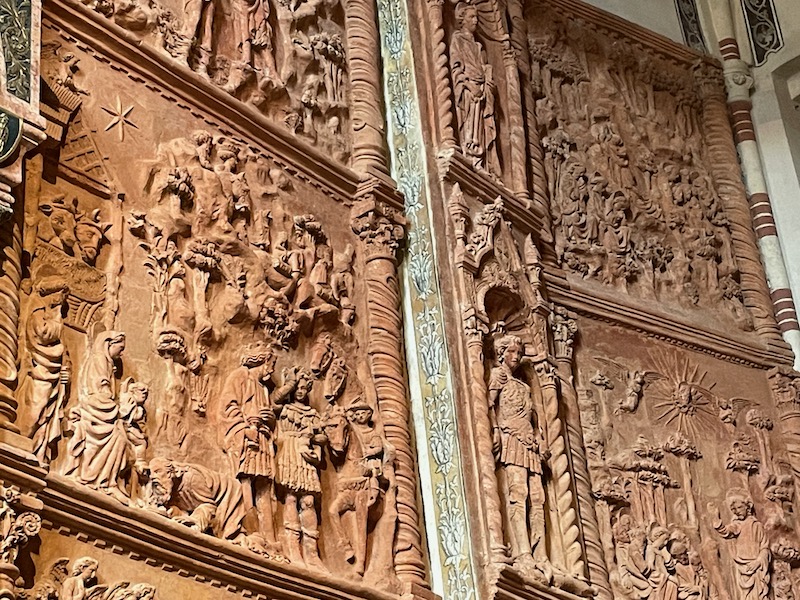
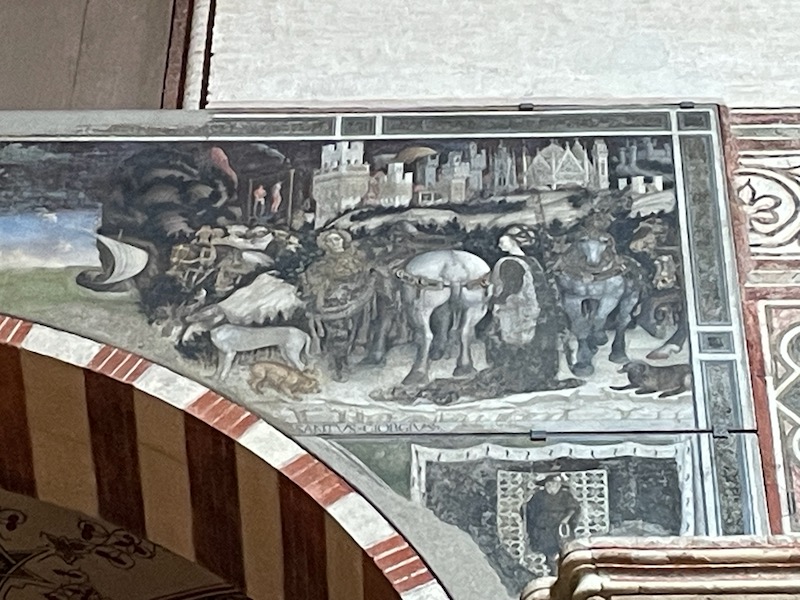
I mentioned that Verona was the city of Romeo and Juliet ... but I never showed you any pictures related to them. This is because we missed going by the "Romeo house" and we went by the Juliet house but it most of it was closed for work and there were hoards of young girls packed at the entrance to the courtyard, so we skipped it.